I never thought that I would visit Slovenia – this small country was late to make it on my travel radar, and I remember thinking to myself when a friend suggested we visit…’what on earth is there to do in Slovenia?!’. Turns out, this beautiful country is extremely underrated and offers something for everyone, from romantic lakeside views, to dramatic mountain passes and sleepy seaside villages. We saw castles and caves. We went hiking and witnessed some of the most emerald green waters I’ve ever seen. We learned about Slovenian history and culture, and got to experience delicious food and wine. I truly think that everyone should visit Slovenia at least once in their lifetime because there is so much to offer, so with that being said, here is our trip recap and exact itinerary for our 5-day road trip through Slovenia! Enjoy and happy planning!
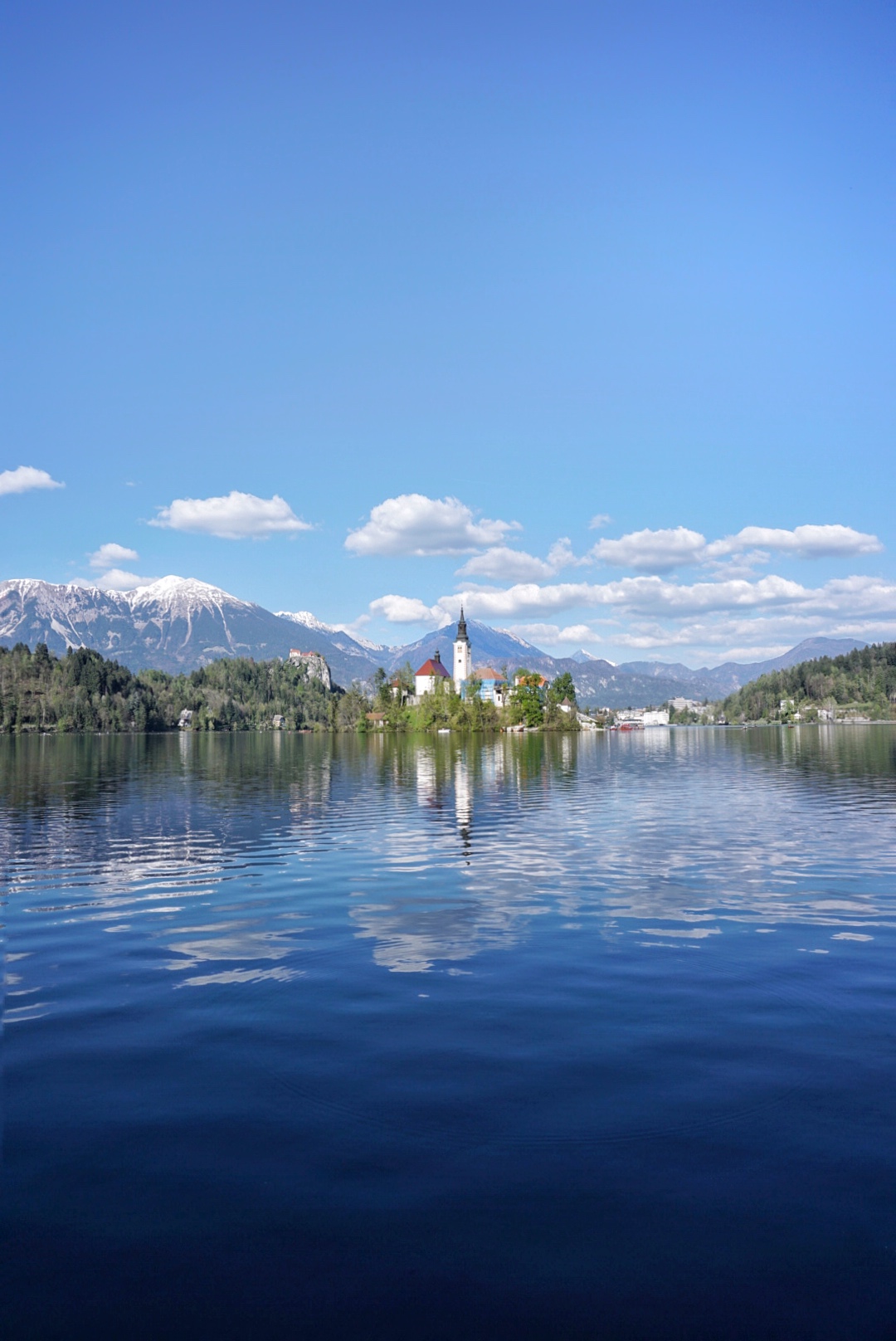
Getting to Slovenia
There are several options for getting to Slovenia. The easiest option is to fly in and out of Ljubljana (or if you want to save some driving time and are planning on following this itinerary, you can fly in to Ljubljana and out of Trieste). Alternatively, you could fly into Venice (one of the larger international airports in the area) which is only a 2.5 hour drive from Ljubljana.
You might also like: A Foodie’s Weekend Guide to Emilia Romagna
While a car is not needed if you’re only visiting the city of Ljubljana, following this itinerary and experiencing some of the best attractions this country has to offer will definitely require that you rent a car. Also note that while there is no border check between Italy and Slovenia, you do need to pick-up a vignette sticker if you’re driving from Italy into Slovenia (you can get one at any of the gas stations along the border).
When to Visit Slovenia
For the best weather conditions, I’d recommend you visit Slovenia in the late spring (April to May) or early autumn (September to October) months. Summertime is also wonderful time of the year with hot, sunny conditions – but that is peak tourist season so expect higher rates and crowds. We visited Slovenia in the month of May and the weather was perfect for experiencing the outdoors; mornings and nights were still cold and required that we wear a fleece or jacket, but the daytime temperatures were very pleasant!

Day 1: Ljubljana
Predjama Castle and Postojna Caves
We started our 5-day road trip through Slovenia with a visit to Postojna Cave Park, which features the medieval Predjama Castle. This castle is built along a vertical cliff face and is the world’s largest cave castle. Under the castle are the Postojna Caves, where you can take a unique ride on an underground train (the tour of the cave is 90 minutes long) to witness stunning cave formations. While on the tour, we also got to see Olms (a.k.a baby dragons), which were these weird milky white lizard-like creatures which are known to be some of the bizarrely ‘toughest’ animals around (they have no eyes, can go without food for up to 12 years, and have a lifespan of over 100 years!).
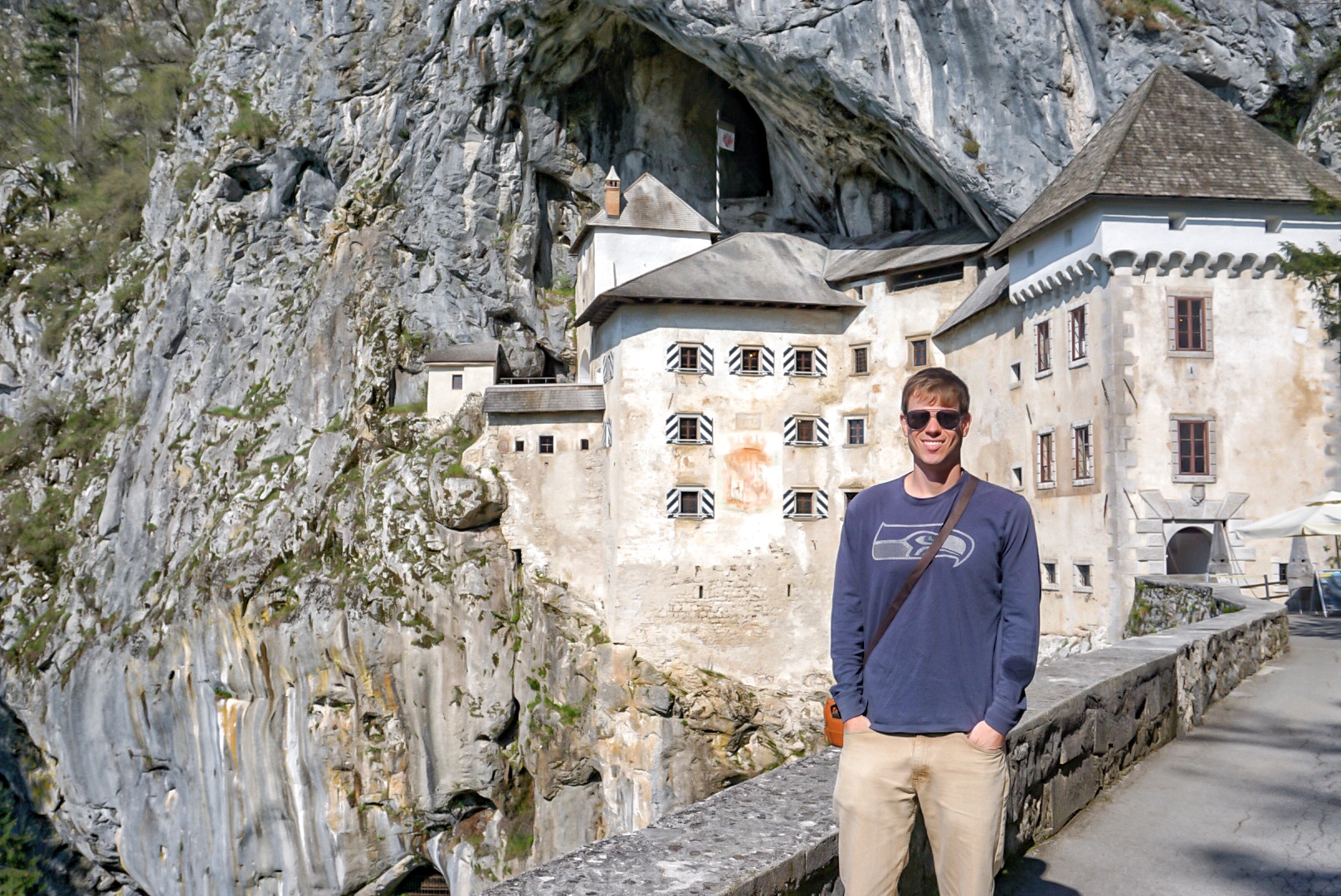
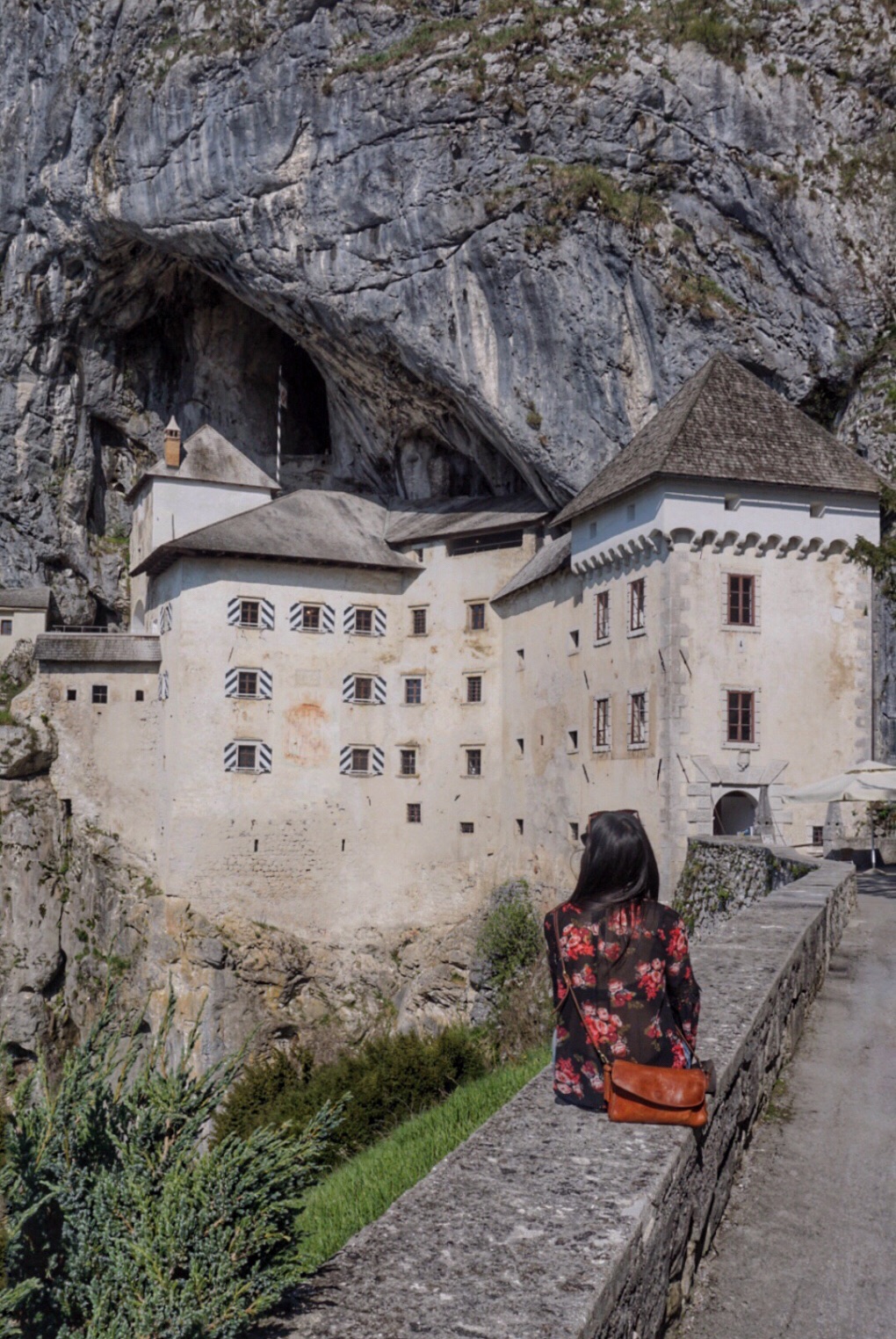
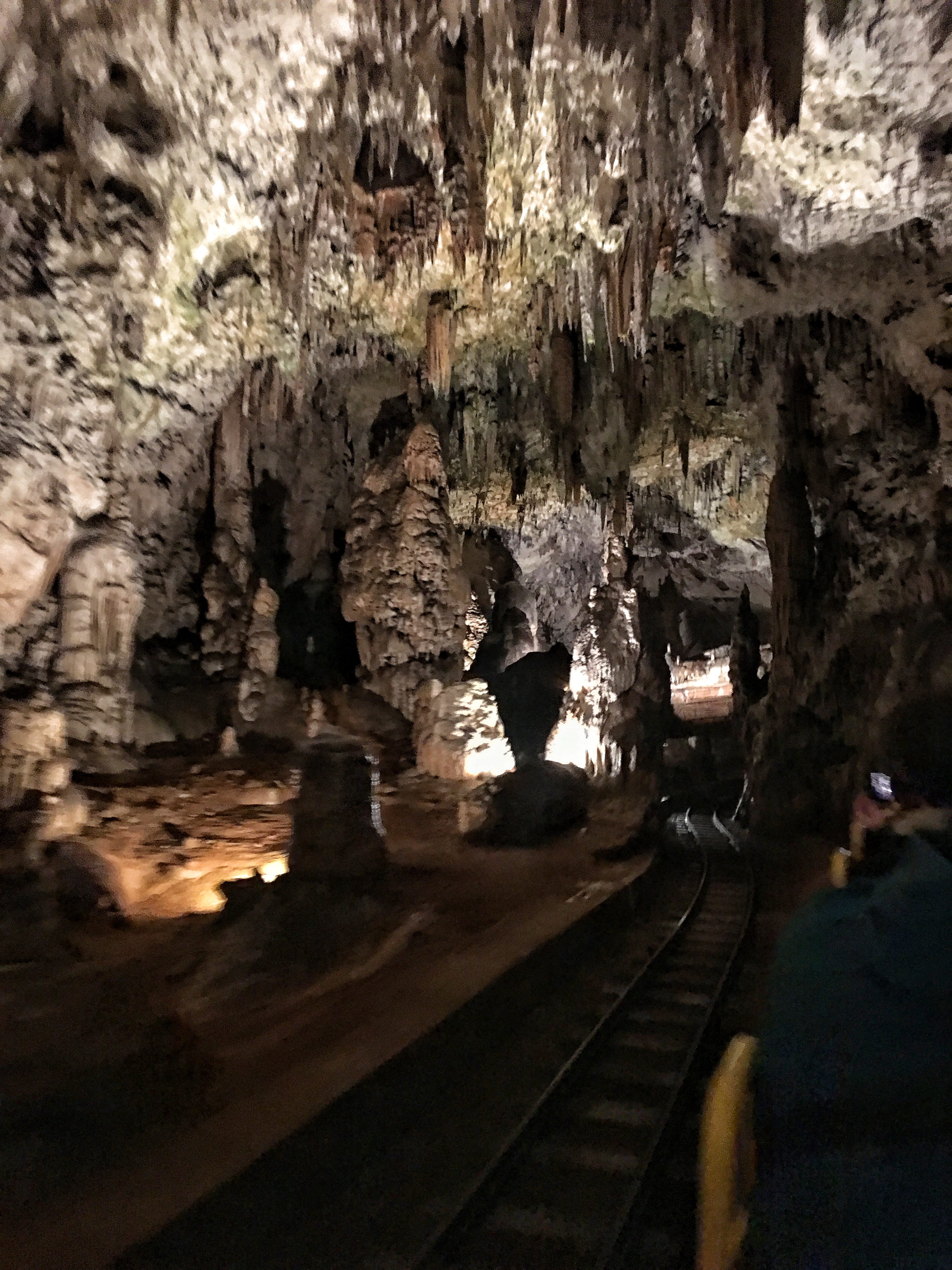
After our cave tour, we walked around the charming village of Predjama and had some lunch. I wish I could tell you the name of the restaurant we discovered while we were there (if in fact, it had a name…which maybe it didn’t because I don’t remember seeing a sign), but it was a hole-in-the-wall grilled meat shop and the ‘Ljubljana burger’ we had there was absolutely fatty, delicious, and memorable!
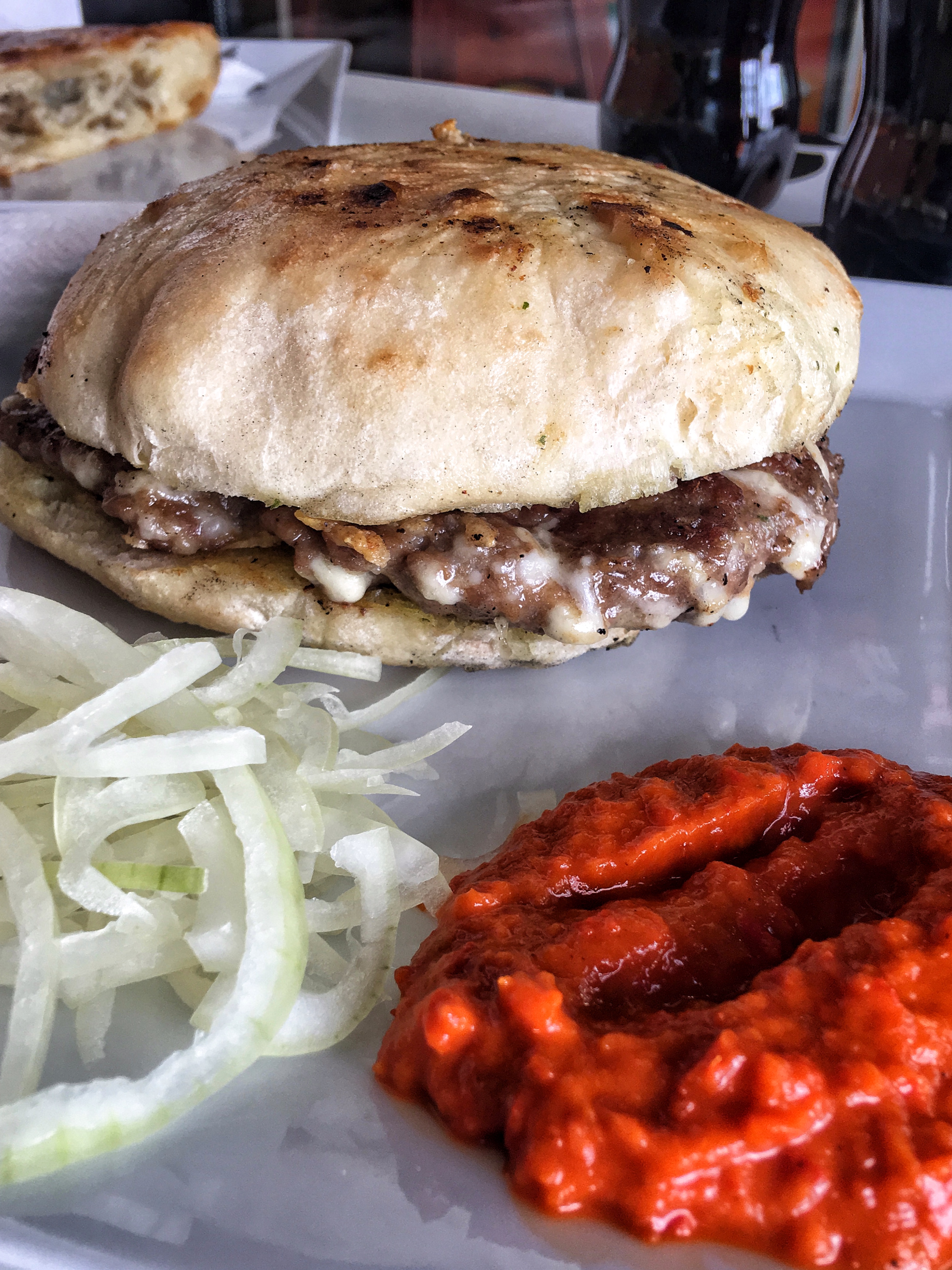
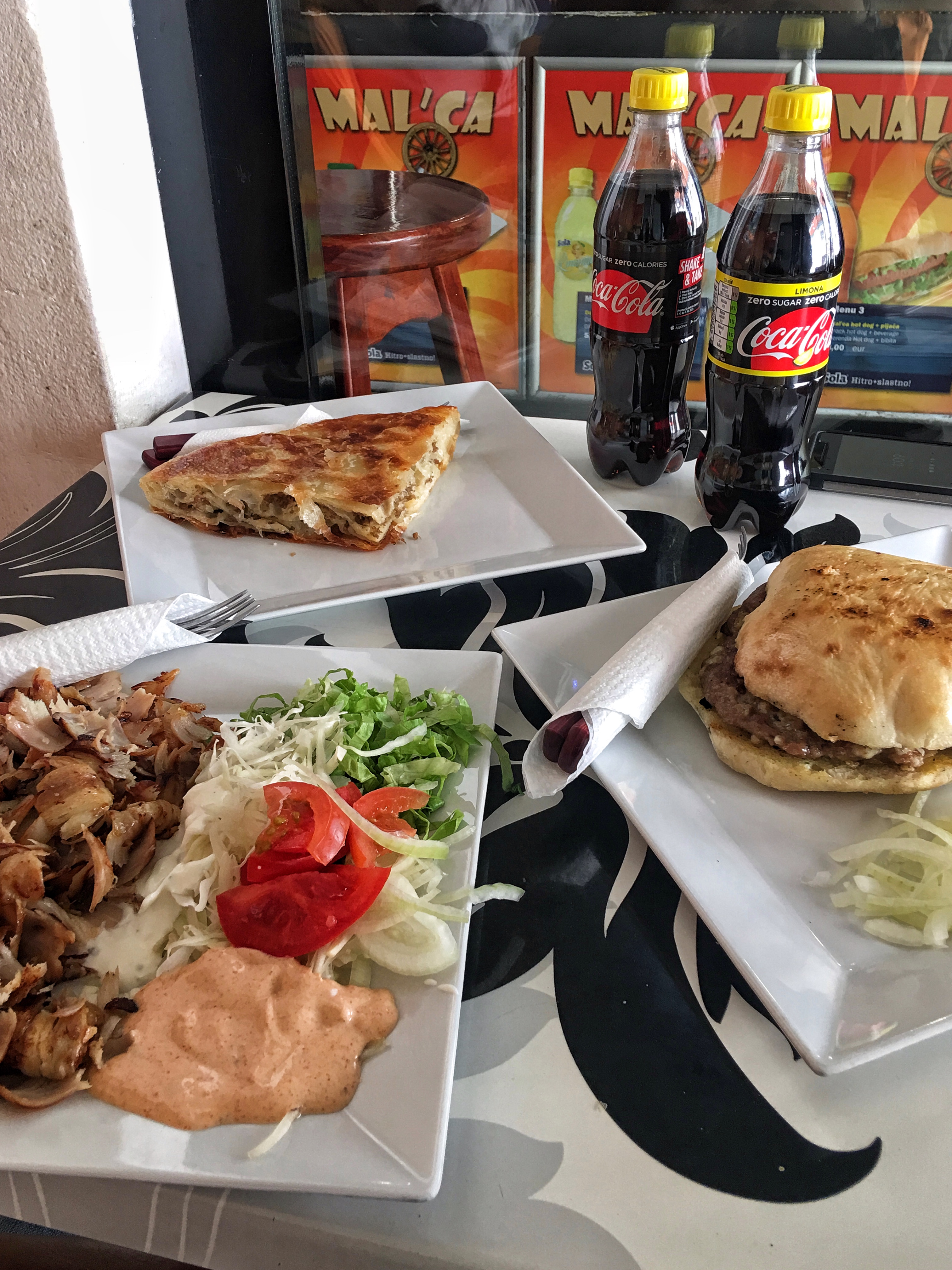
Ljubljana Old Town
Afterwards, we headed to Ljubljana Old Town (around an hour drive) where we would spend the rest of the day and night. It’s extremely convenient to walk around Old Town, with lots of sites to see. Mestni and Stari Trq are the main old town and shopping street of Ljubljana, and you can walk along the pedestrian street parallel to the river towards Prešeren Square (Ljubljana’s main city square) to peruse various local boutique shops, cute cafes, and restaurants.
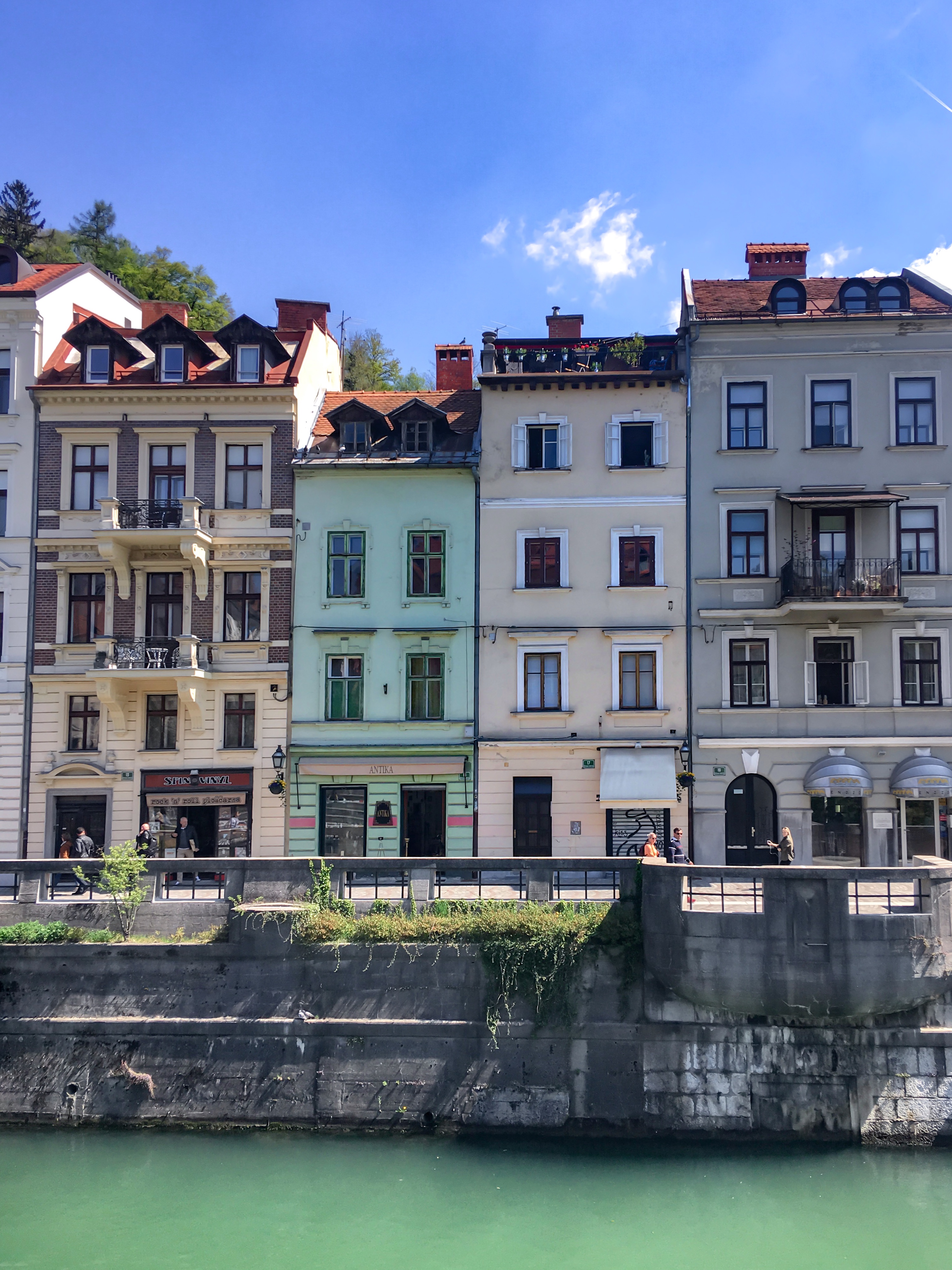

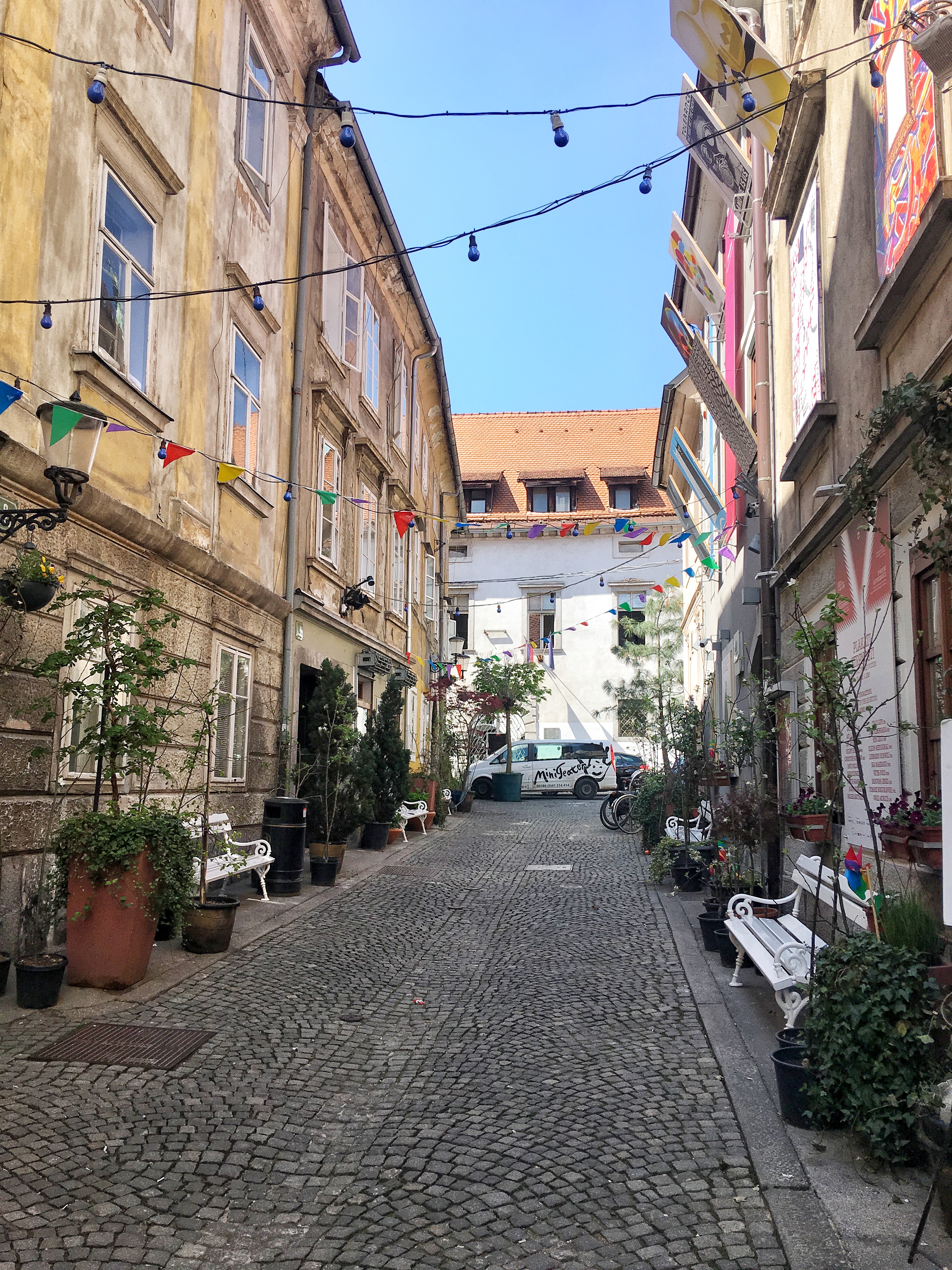

Make sure to stop by the multiple beautiful bridges along the river including Dragon Bridge which features one of Ljubljana’s most photographed dragon statutes, as well as the Cobbler’s/Shoemaker’s Bridge which historically provided space for cobblers’ workshops.
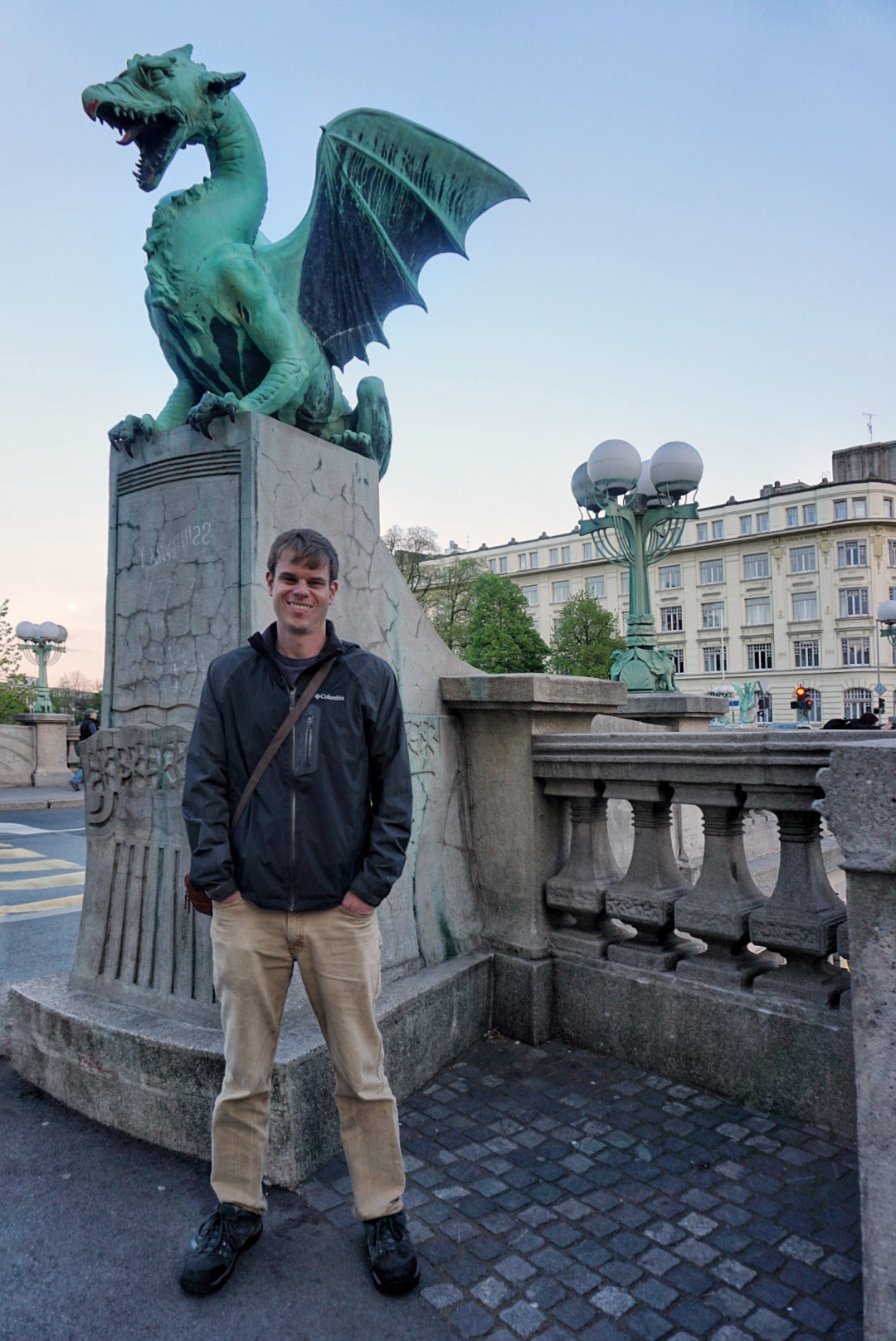
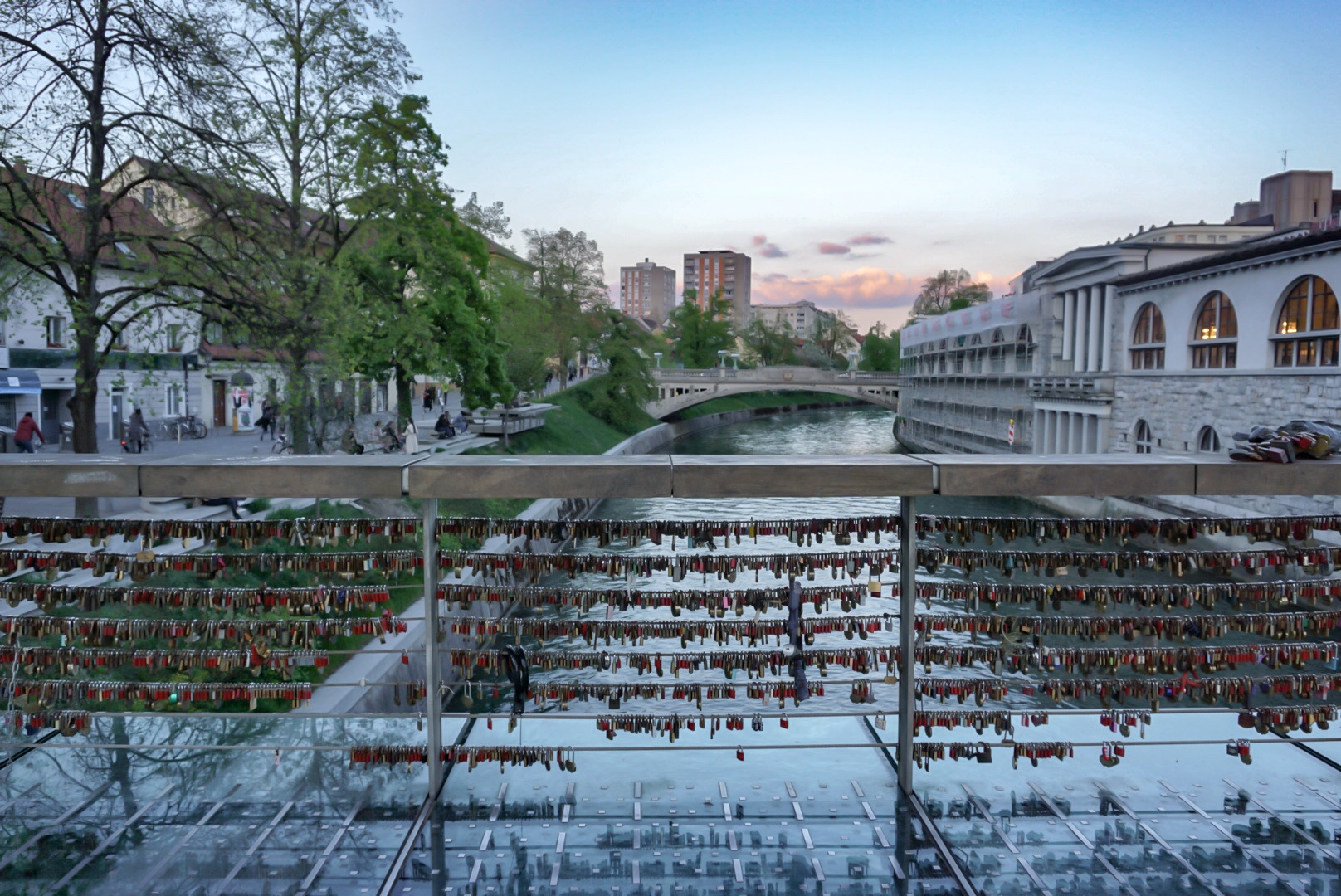
TIP: While in Ljubljana, we stayed at this charming, modern AirBnB which was super convenient to get to (about a 15-minute walk into the heart of the city) and extremely clean and budget-friendly.
Day 2: Ljubljana to Lake Bled
Ljubljana Castle
We started our 2nd day in Slovenia by continuing to experience some of Ljubljana’s famous attractions before making the short one-hour drive from the city to nearby Lake Bled (an absolute MUST-visit). Ljubljana Castle sits on Castle Hill overlooking the downtown area, and was originally constructed as a medieval fortress in the 11th century. While the castle itself was not super beautiful or interesting (especially when compared to our visit to Predjama Castle the day prior), it was still worth visiting for the views of the city. Getting up to the castle requires taking a short funicular railway up the mountain, which was also a fun experience (note – you can also take the walking route up the mountain if you’re looking for a bit of exercise!).
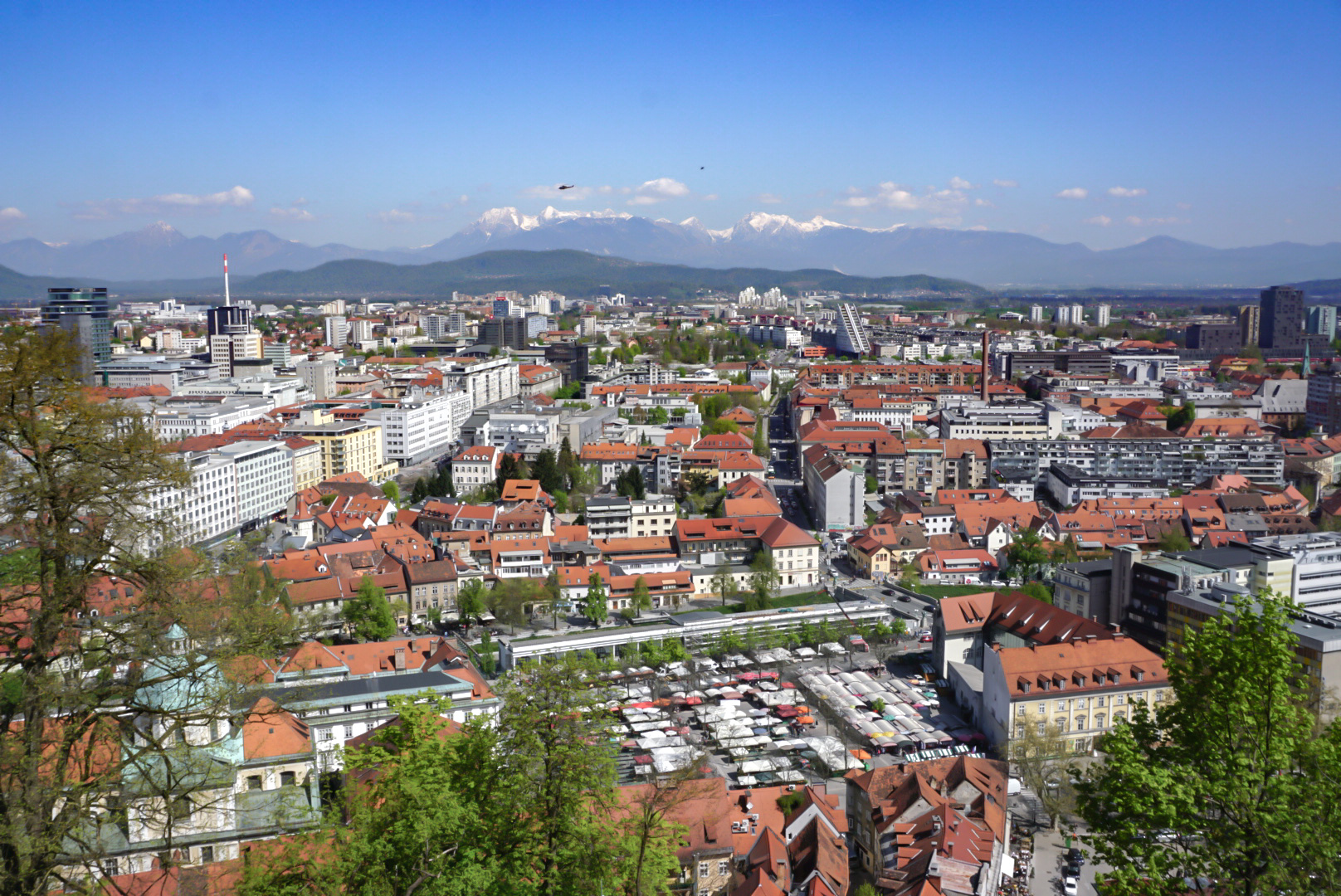
Pogačar Square
After our visit to the castle, we roamed around the charming Pogačar Square and had some lunch. Every Friday from mid-March until the end of October, the Pogačar Square hosts a unique food market where chefs of Slovenian restaurants prepare various dishes from all over the world. We tried a bunch of different foods out including some local sausage with mustards, and also got to try something called ‘kaiserschmarrn’ which is basically a sweet shredded pancake that is covered with your choice of toppings (nutella for Kevin, fruit preserves for me).
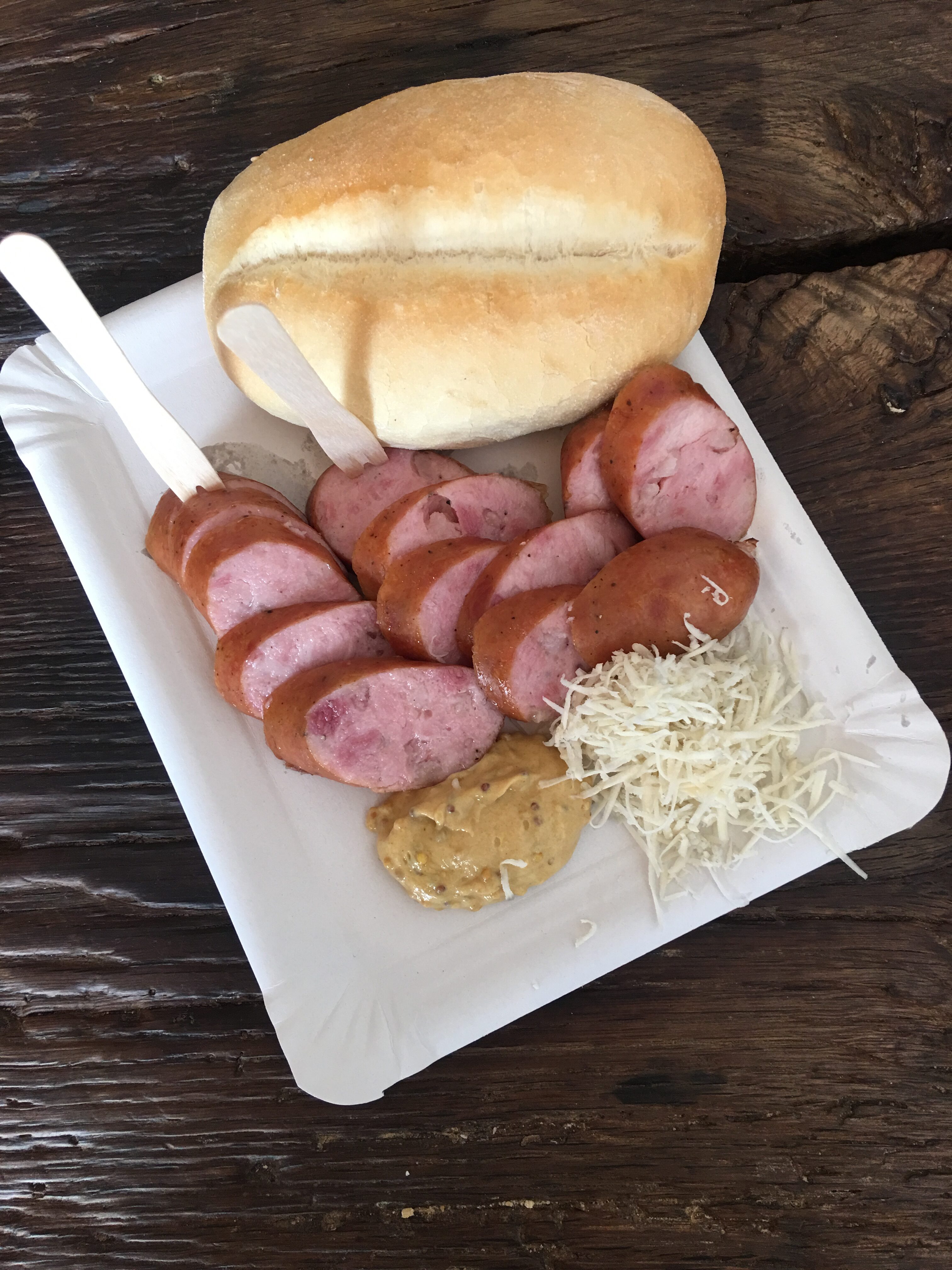
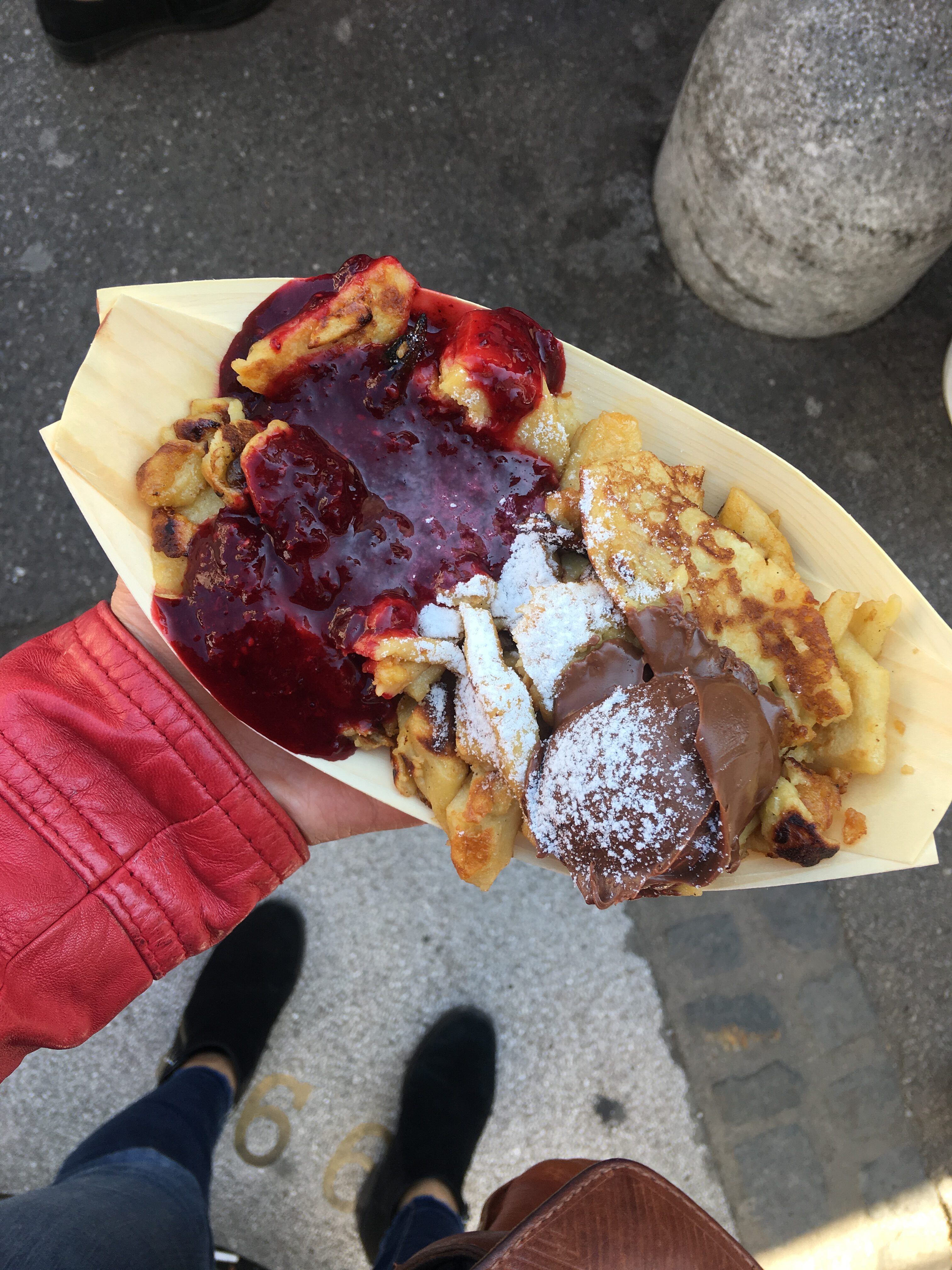
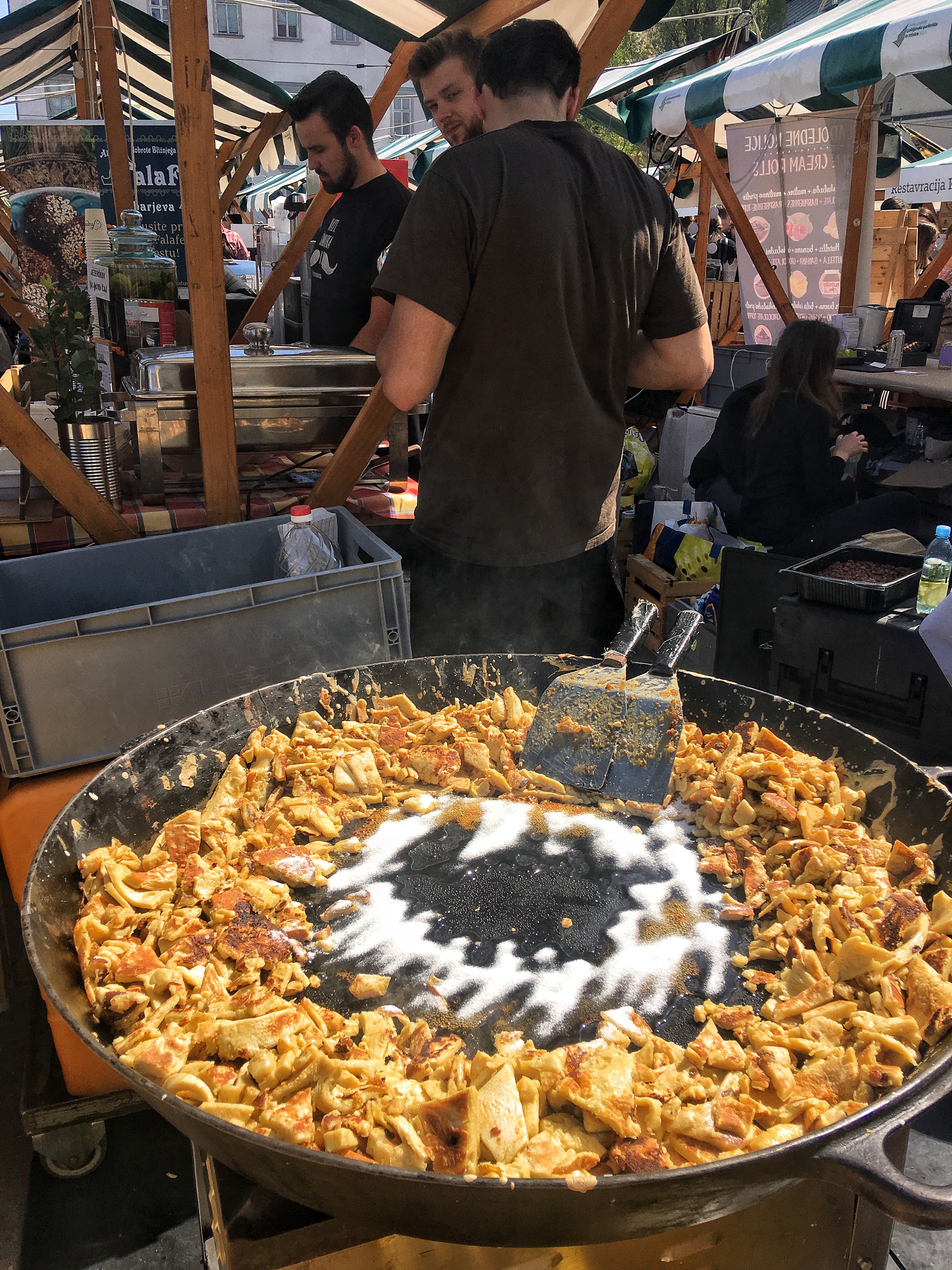
Jamnik
Afterwards, we made our way to Lake Bled, stopping by the village of Jamnik on the way to see the picturesque hilltop Church of St. Primus and the Slovenian countryside. Jamnik is one of the most photographed locations in Slovenia, and for good reason – the landscape looks straight out of a fairytale.

Lake Bled
Once we arrived at Lake Bled, we checked into our lodging for the next few days – Glamping Gozne Vile! I seriously can’t recommend the glamping cabins at this resort enough. Each small wooden hut is perfect for 2 people, and includes a comfortable bed inside with some wooden patio chaise lounges, and a private outdoor tub heated by firewood. While there are no bathrooms in the huts themselves, each hut has their own private bathroom nearby (about a 2-3 minute walk from the campsite) which was super clean and featured heated floors! During your stay, a cute breakfast picnic basket is provided in front of your hut every morning as well.
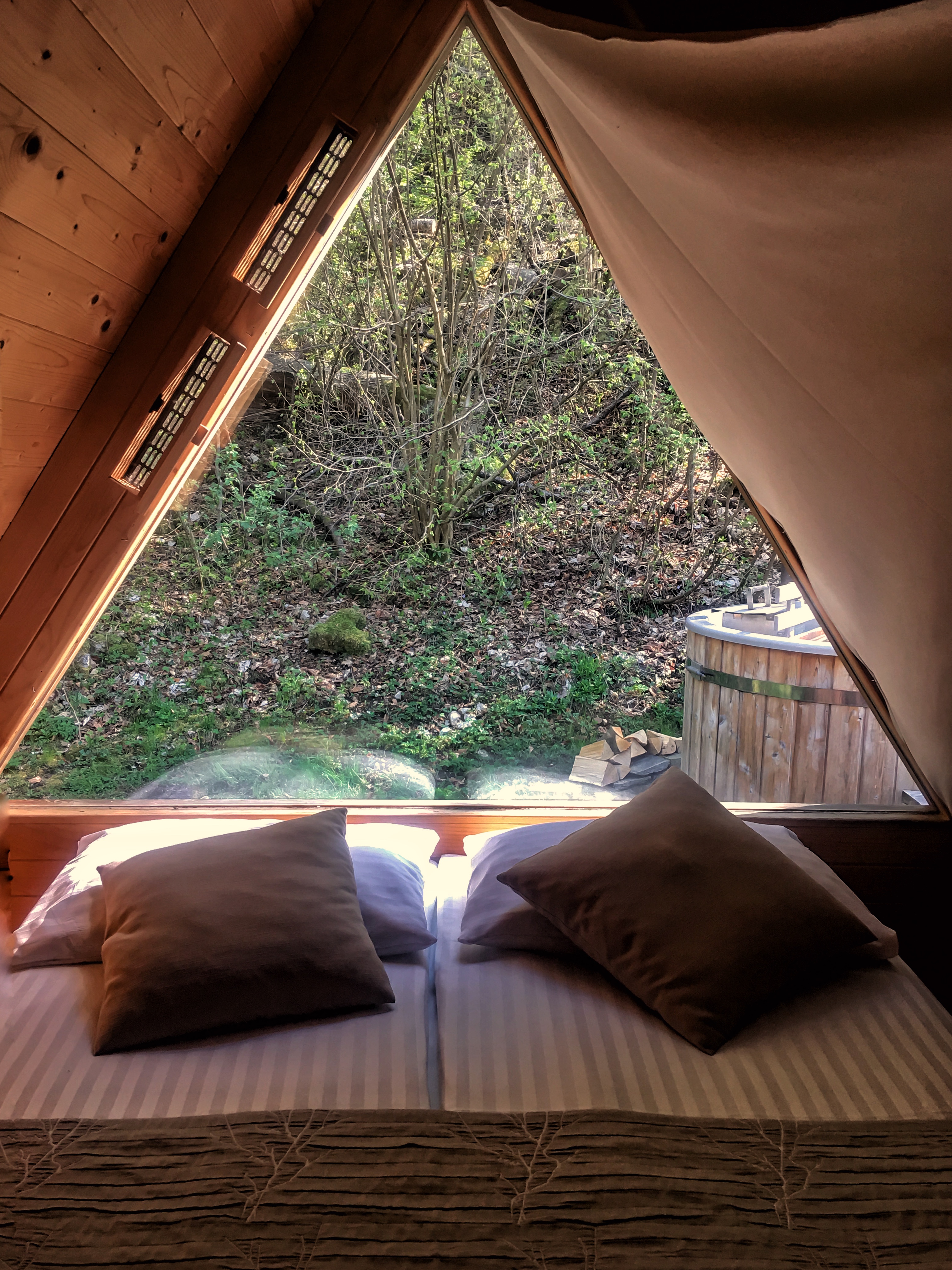
Lake Bled is seriously beautiful. After we settled into our campsite, we took a leisurely walk around the lake. With it’s bluish-green color and picture-perfect church on an island, surrounded by rocky mountains….we discovered during our walk along the lakeside promenade (which takes about an hour round-trip) that there’s really no bad vantage point of Lake Bled.
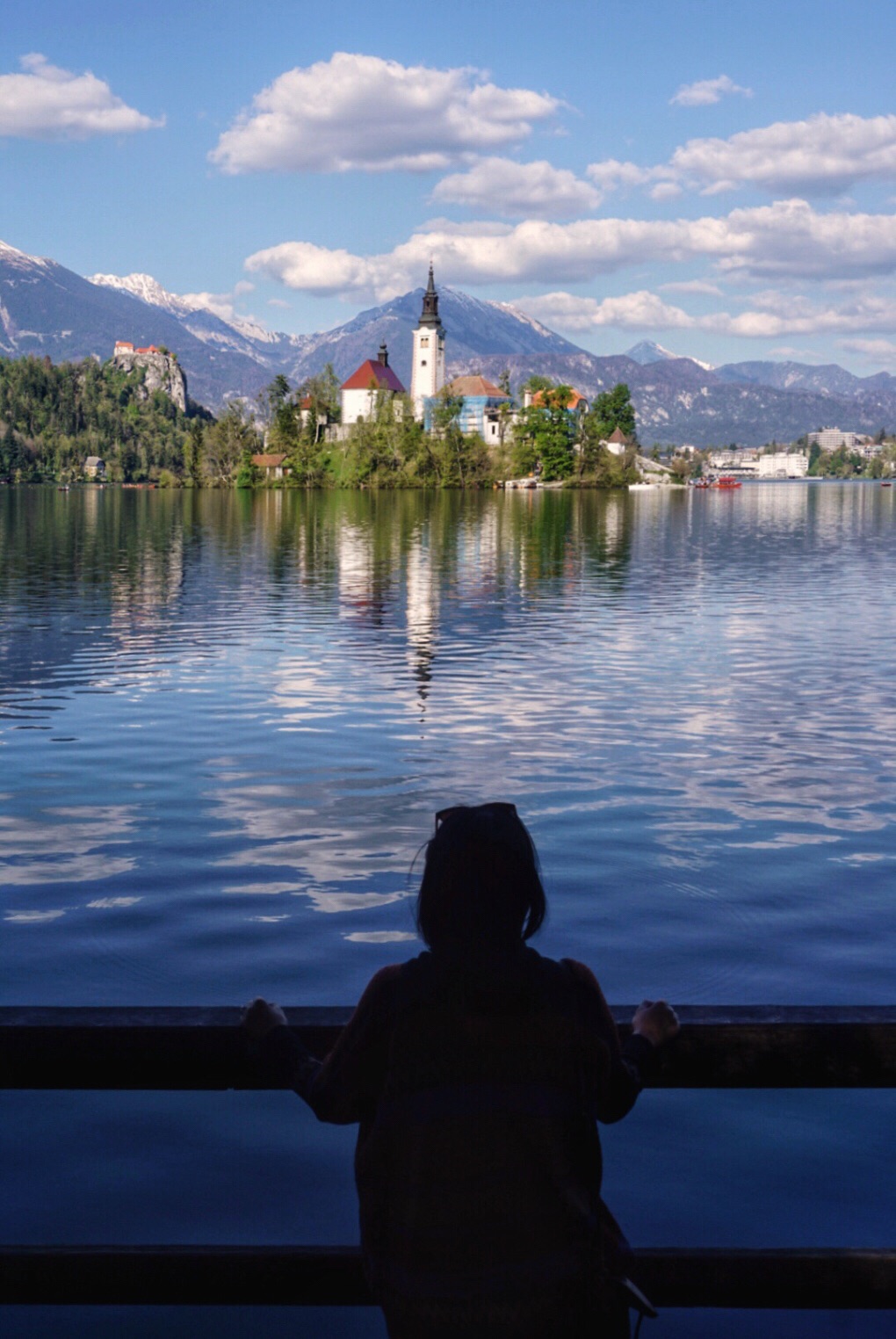
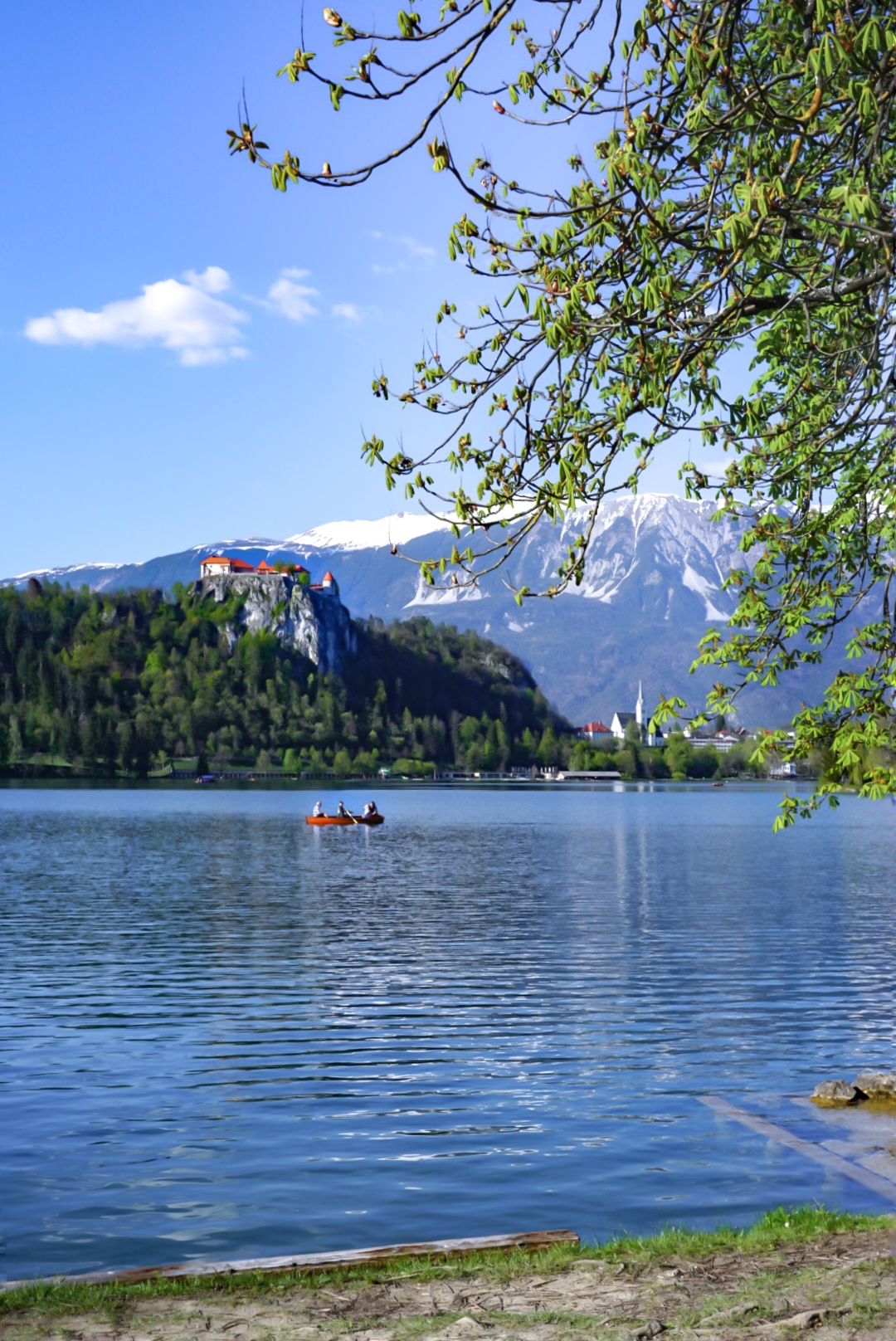
For a short snack break, we stopped for some coffee, lakeside views, and the famous ‘Bled cream cake’ at Café Belvedere. This Slovenian specialty features a delicate puff pastry atop multiple layers of light vanilla cream and custard, dusted with powdered sugar. We loved it, and are looking forward to trying to ‘recreate’ a recipe at home.
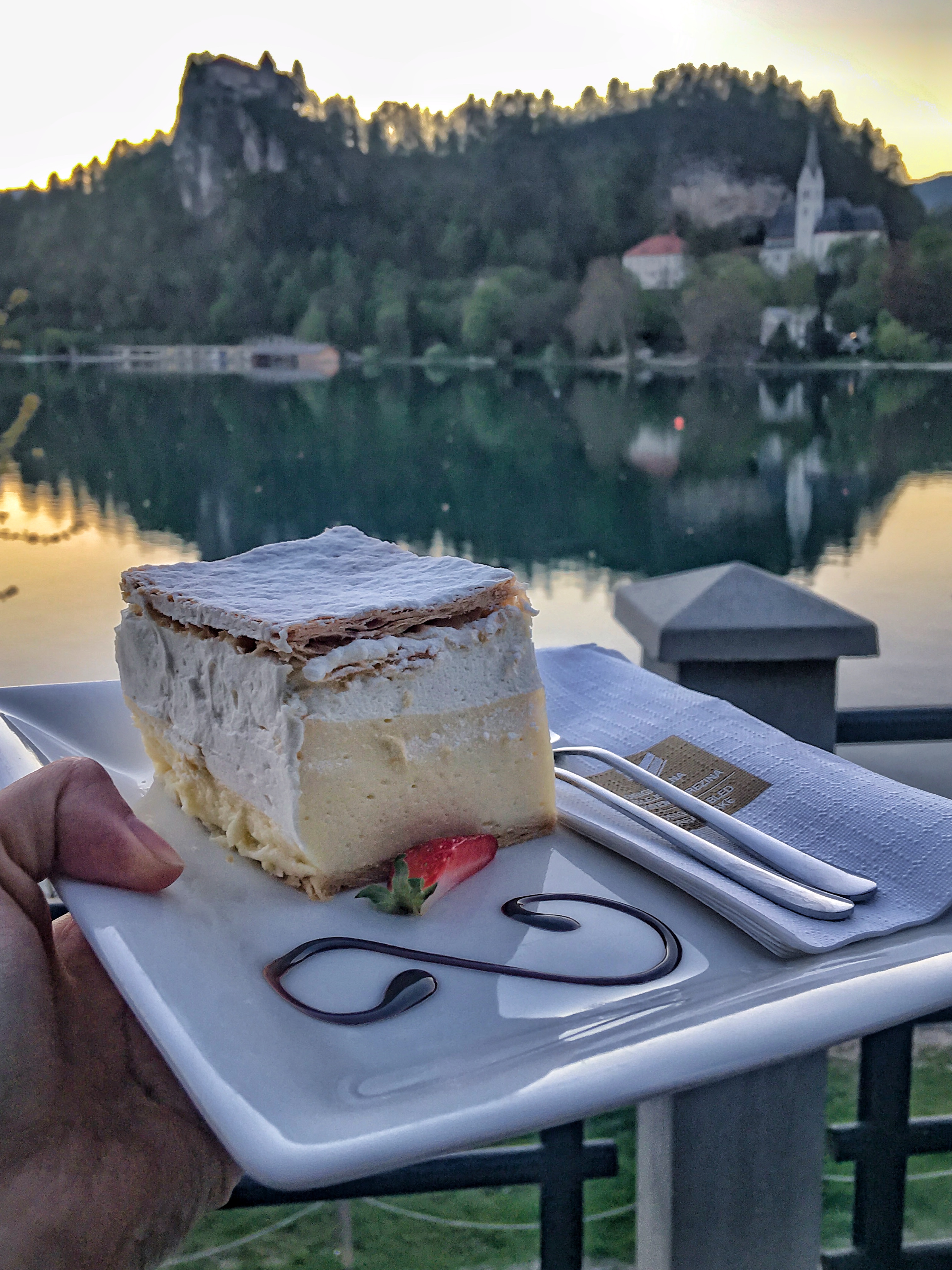
We ended our night by having some takeaway pizza and beer in front of the fire at our campsite. Bliss!
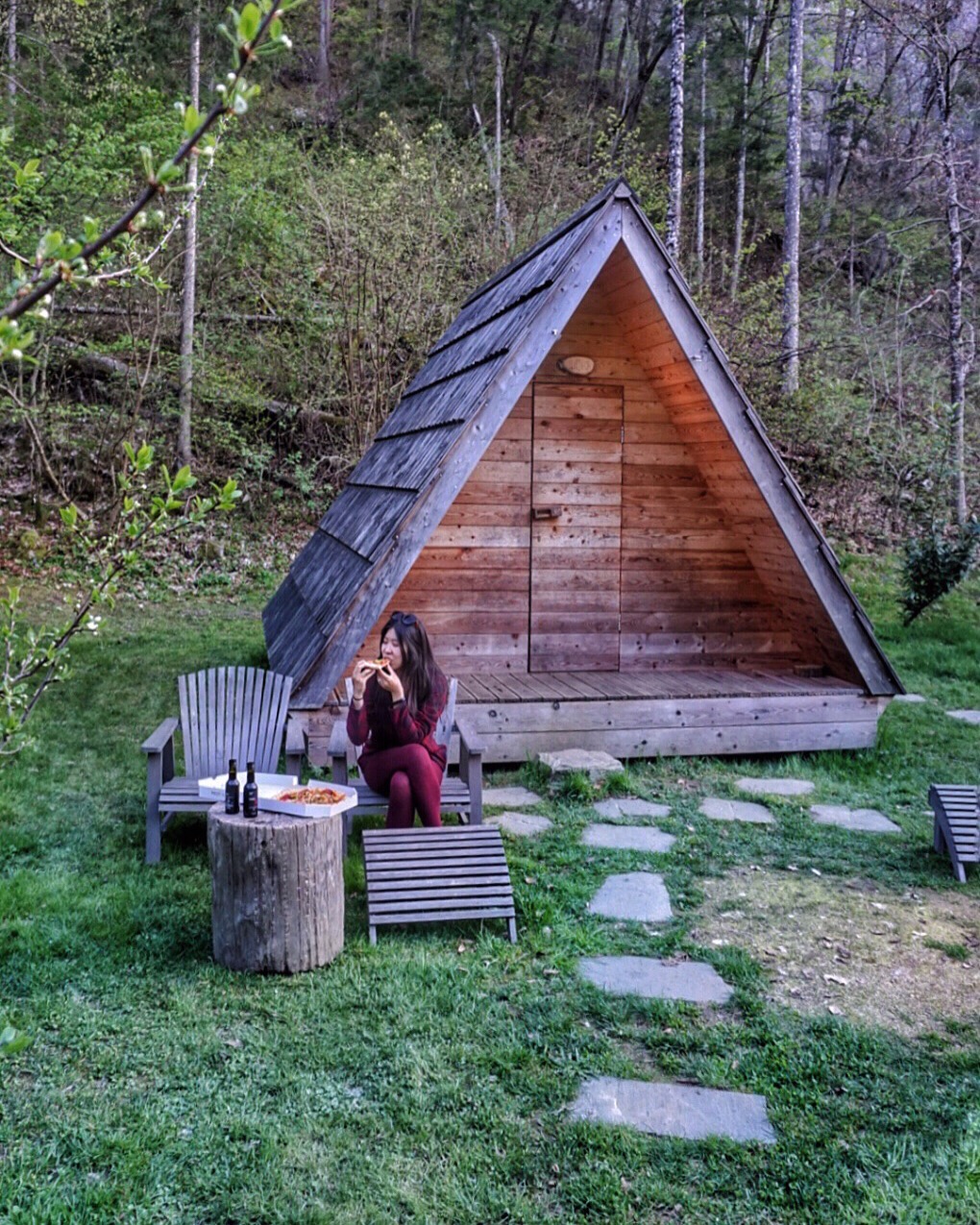
Day 3: Lake Bled
Sunrise at Ojstrica
One of the best things to do in Lake Bled is to hike to Ojstrica at sunrise. Ojstrica is one of many viewpoints (e.g., Mala Osojnica and Velika Osojnica) but is the easiest viewpoint to reach, and offers a perfect view overlooking the church and lake. We woke up at 6:00am and completed the 45 minute moderate hike to the top, just in time to catch a beautiful pink sunrise.
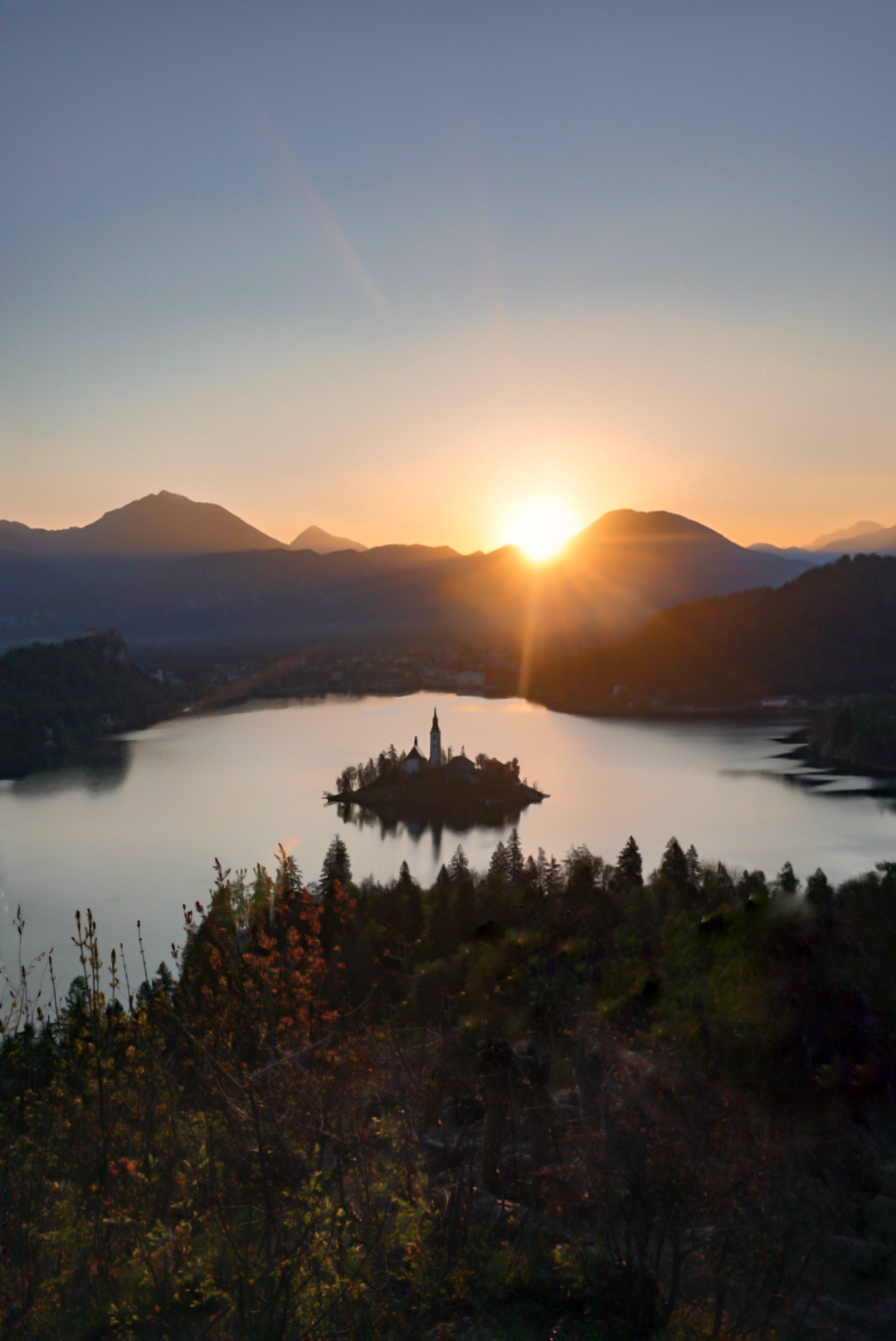
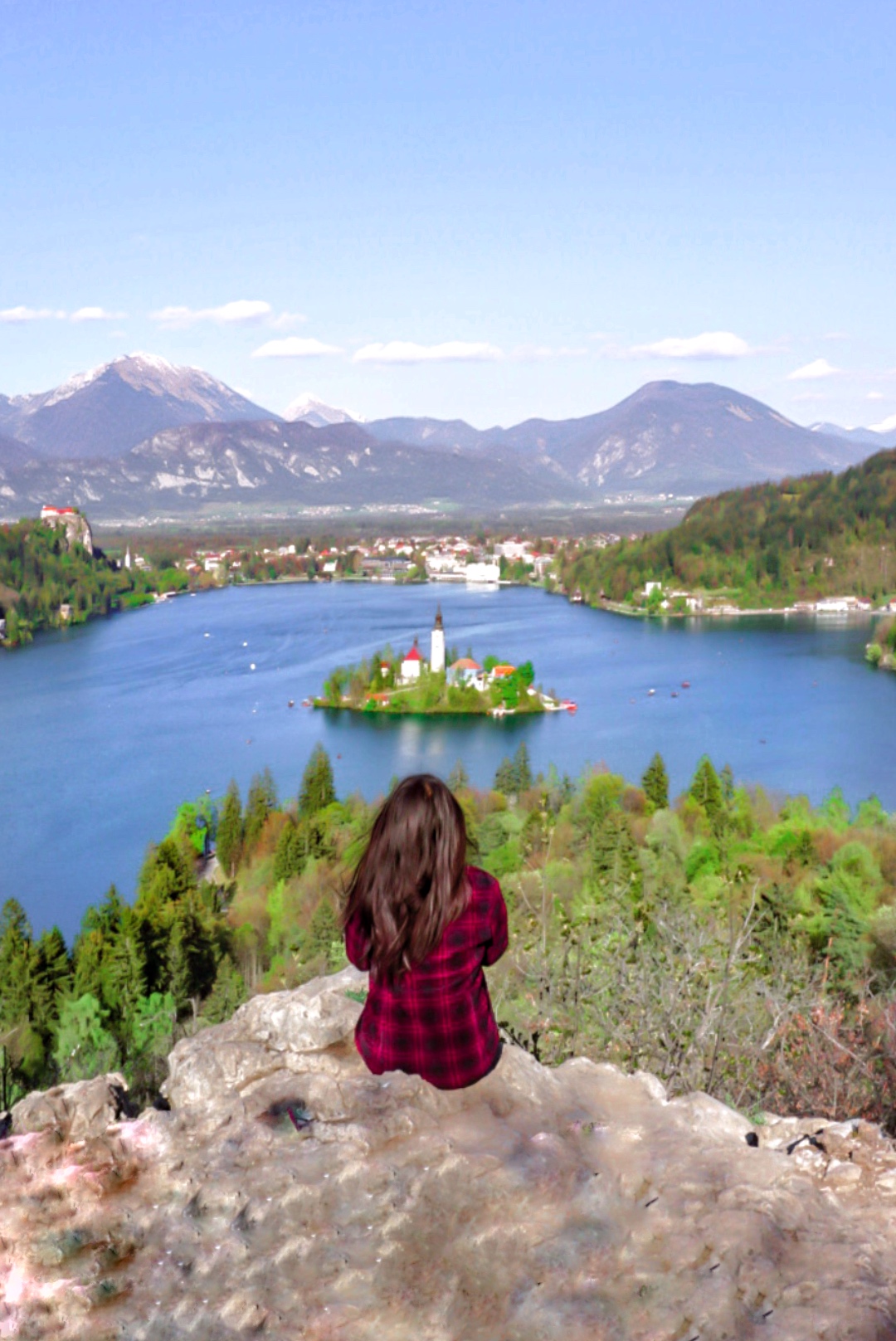
We then decided to continue hiking to check out some of the other viewpoints, making our way up to Velika Osojnica and then looping back via Mala Osojnica.
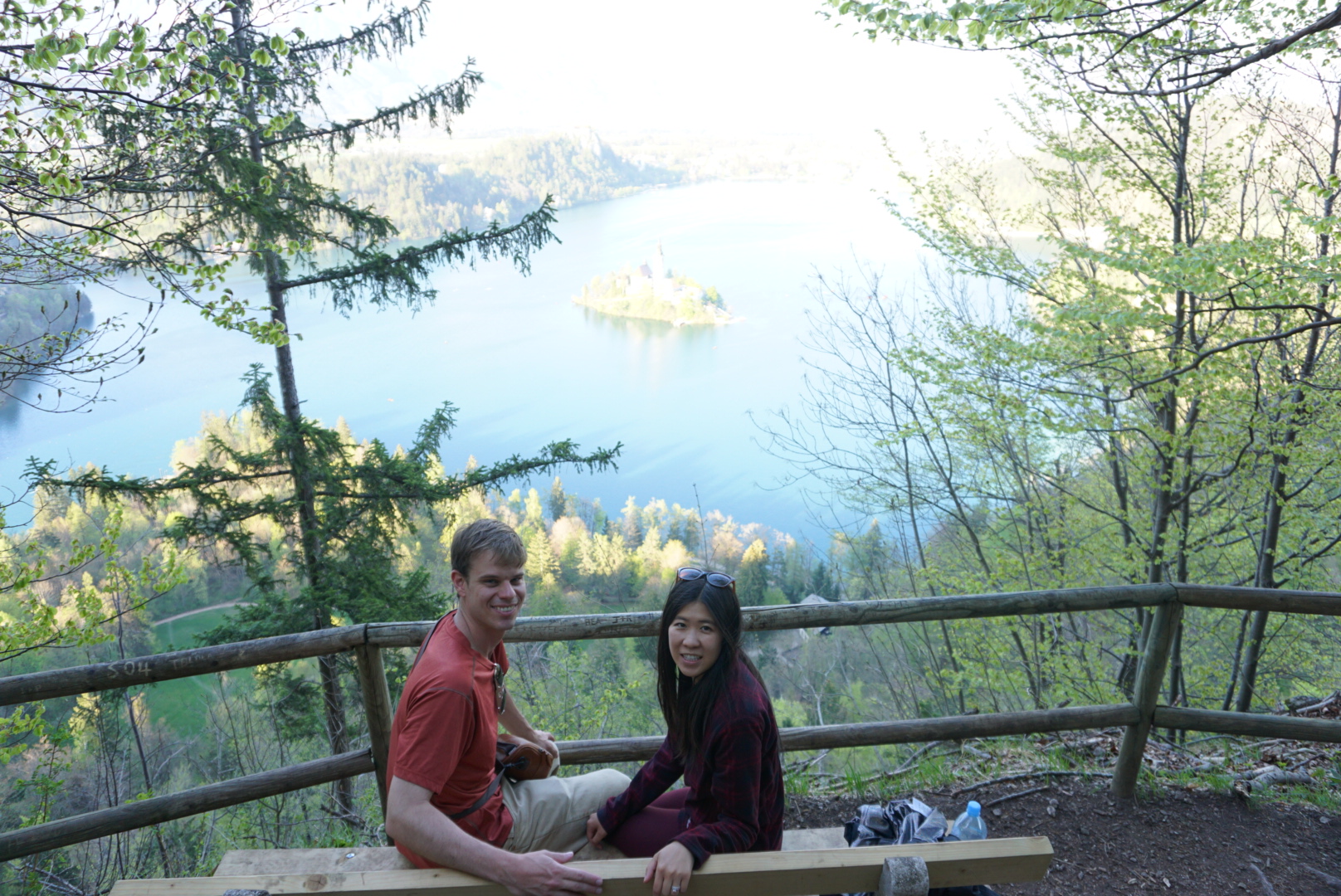
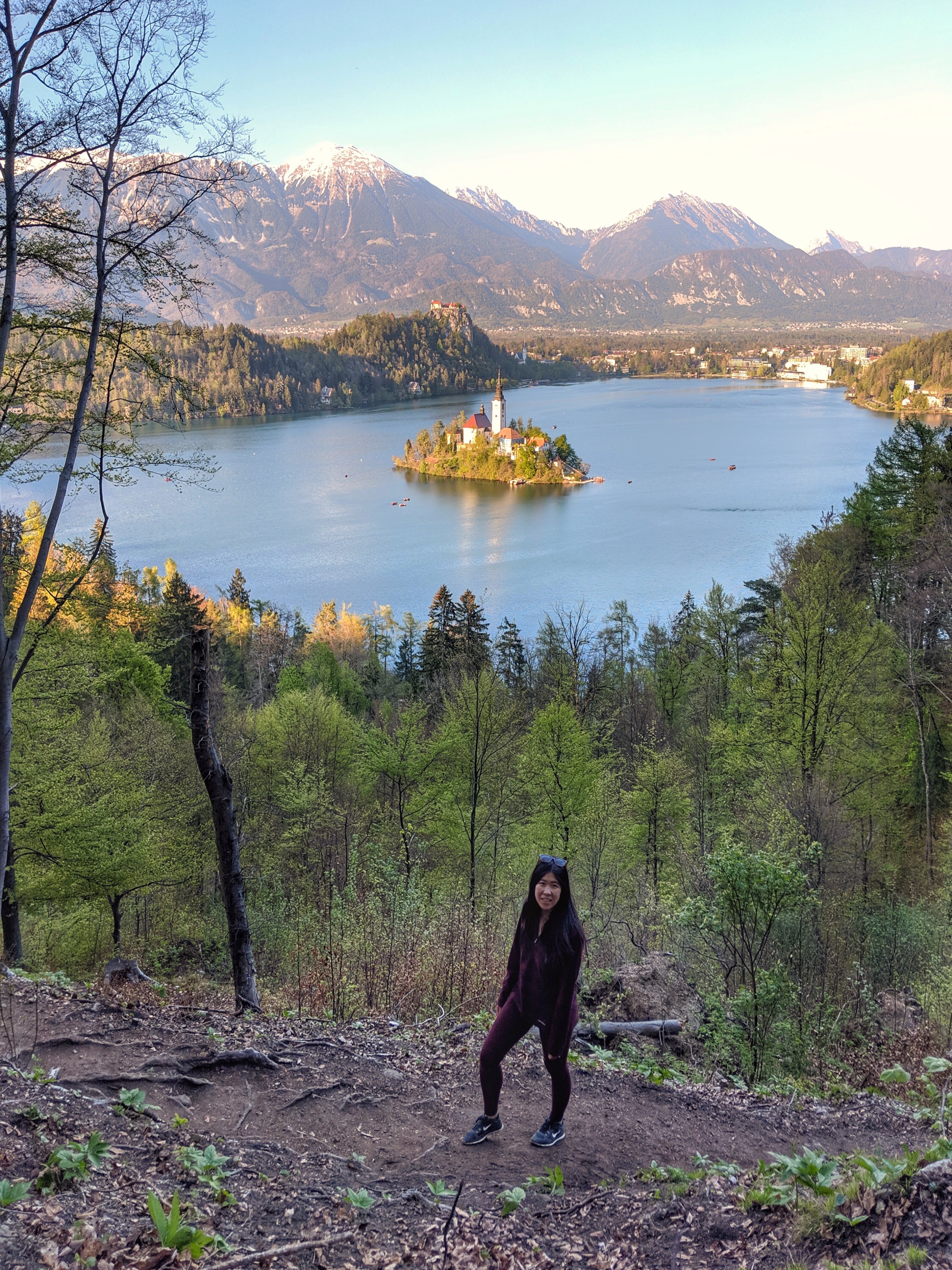
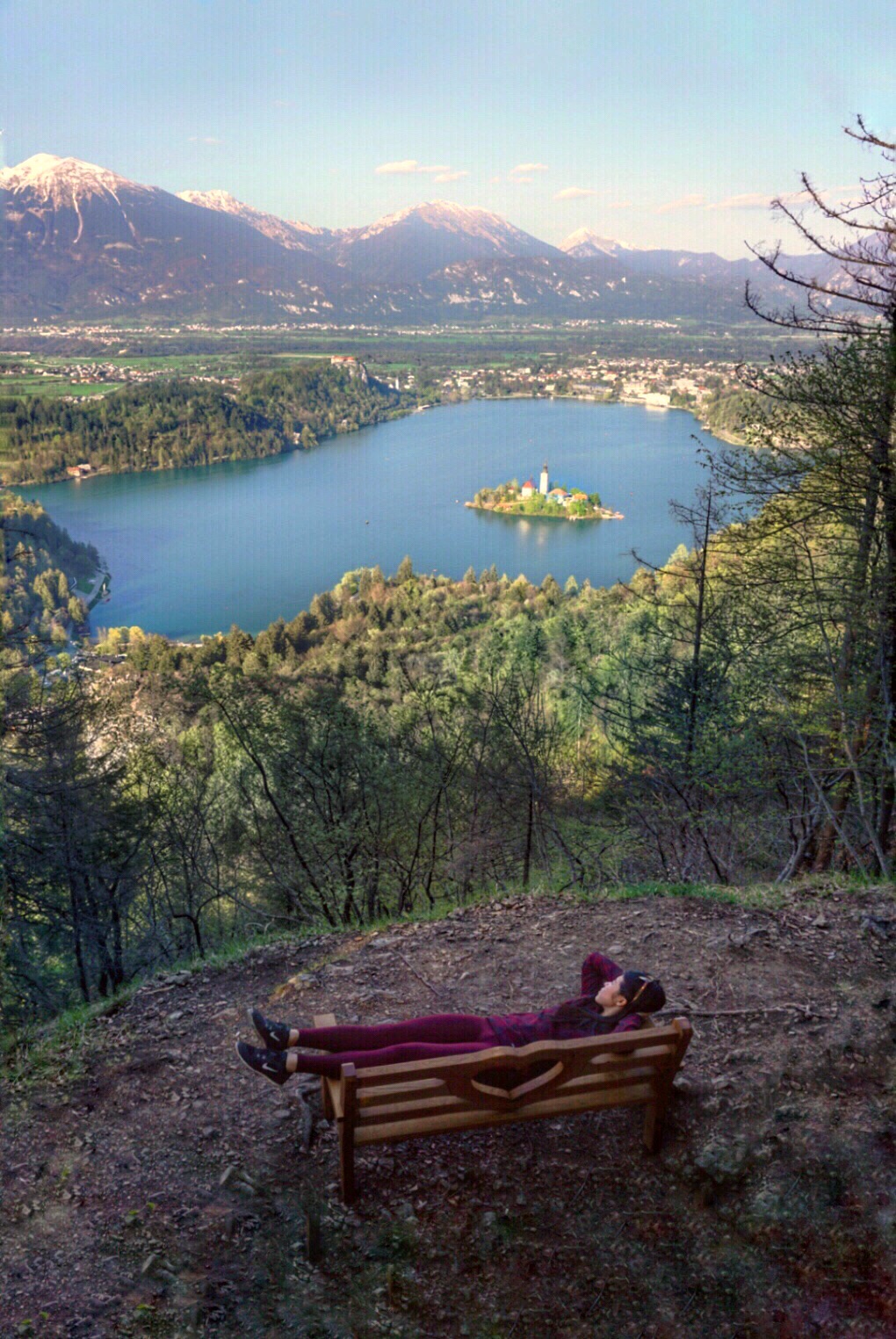
Vintgar Gorge
By far one of the most memorable attractions during our road trip through Slovenia was the Vintgar Gorge, which is a short 4-mile drive away from Lake Bled. This 1-mile long trail follows a series of criss-crossing boardwalks along the Radovna River and is really something special. Note – there is an entrance fee for Vintgar Gorge (10 Euro/adult) and although there is a large parking lot near the entrance, it can get quite full if you visit later in the day. Luckily, we were able to visit around 10:00am (after our Ojstrica hike) and were able to witness the magical emerald green waters without a ton of crowds.
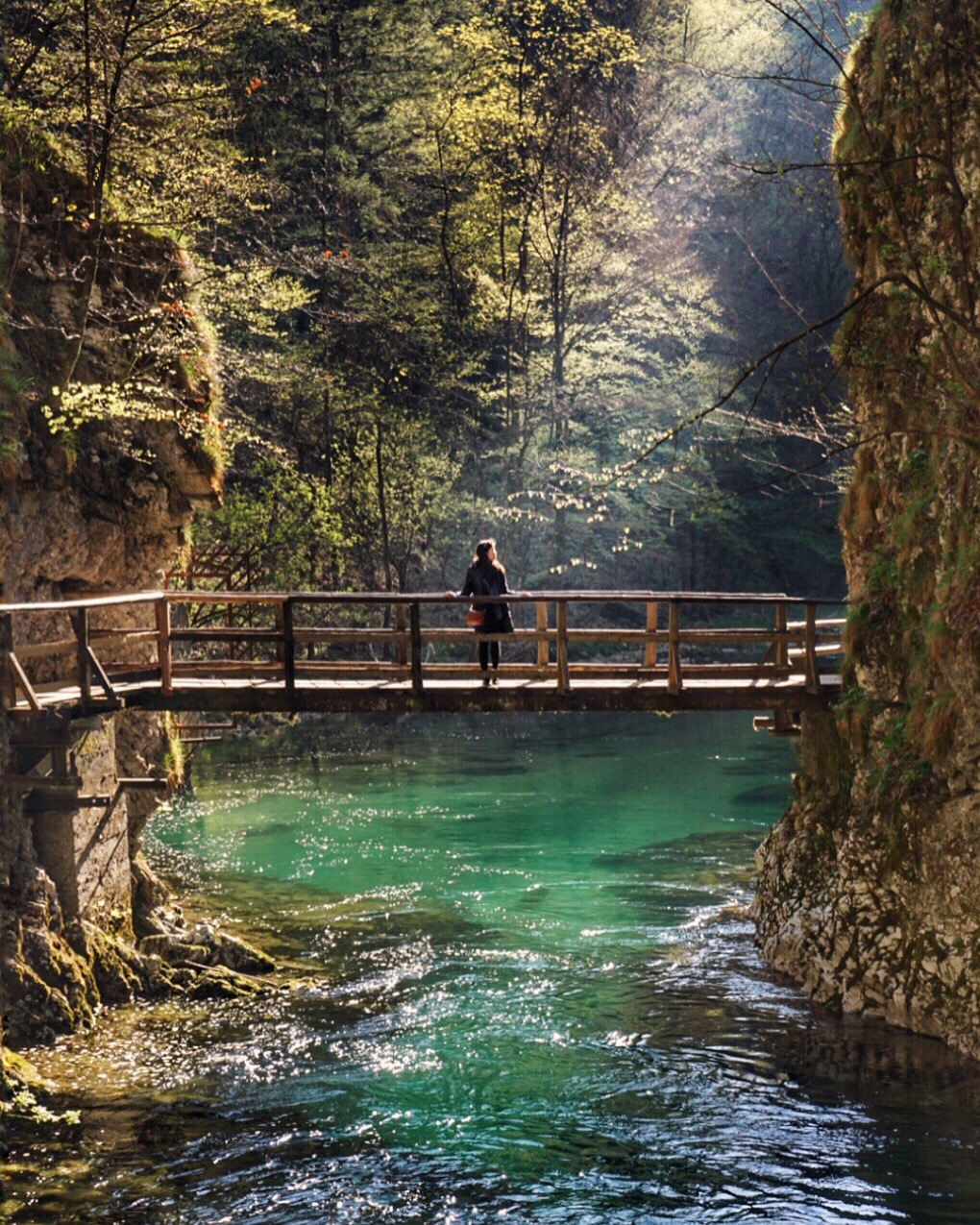
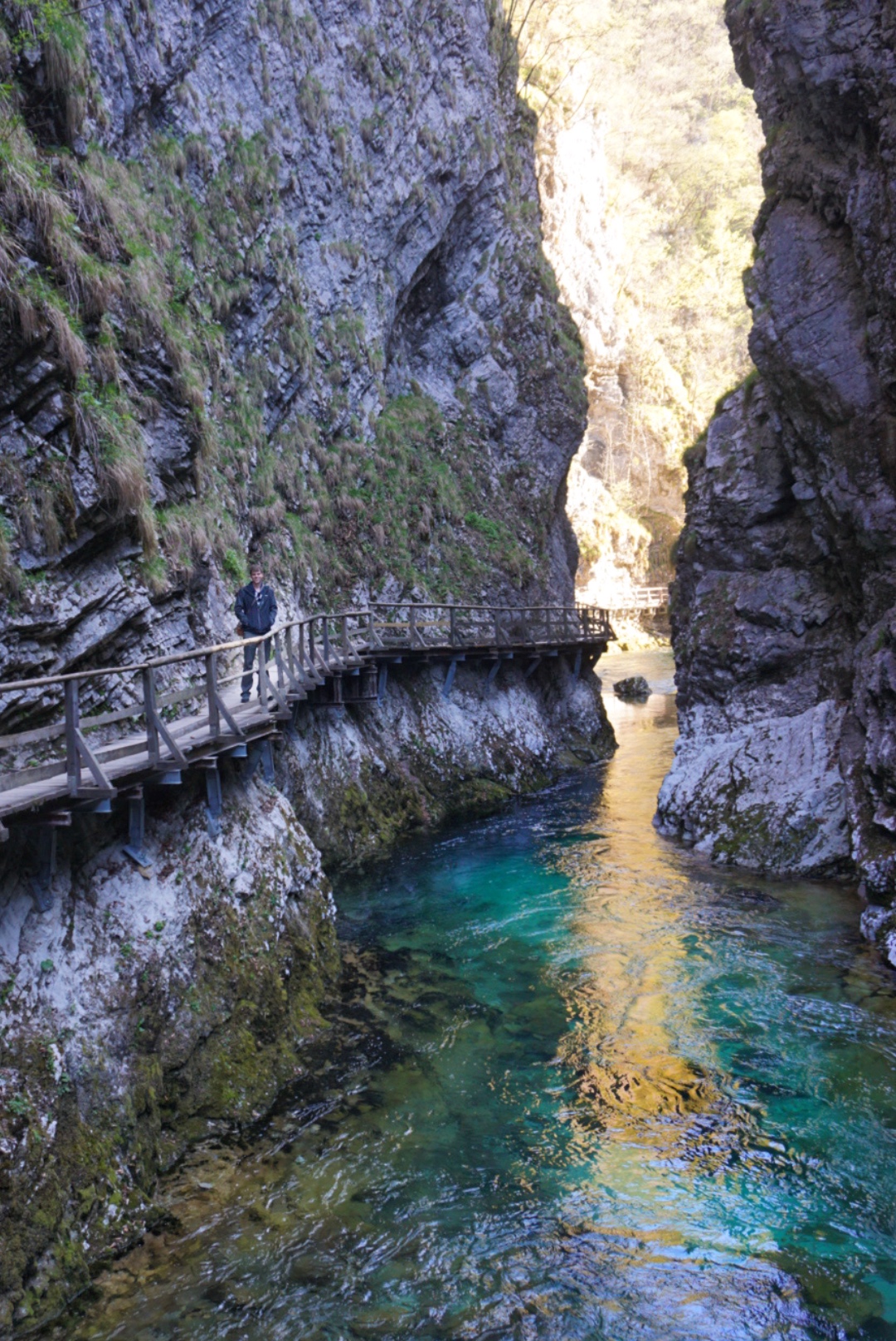
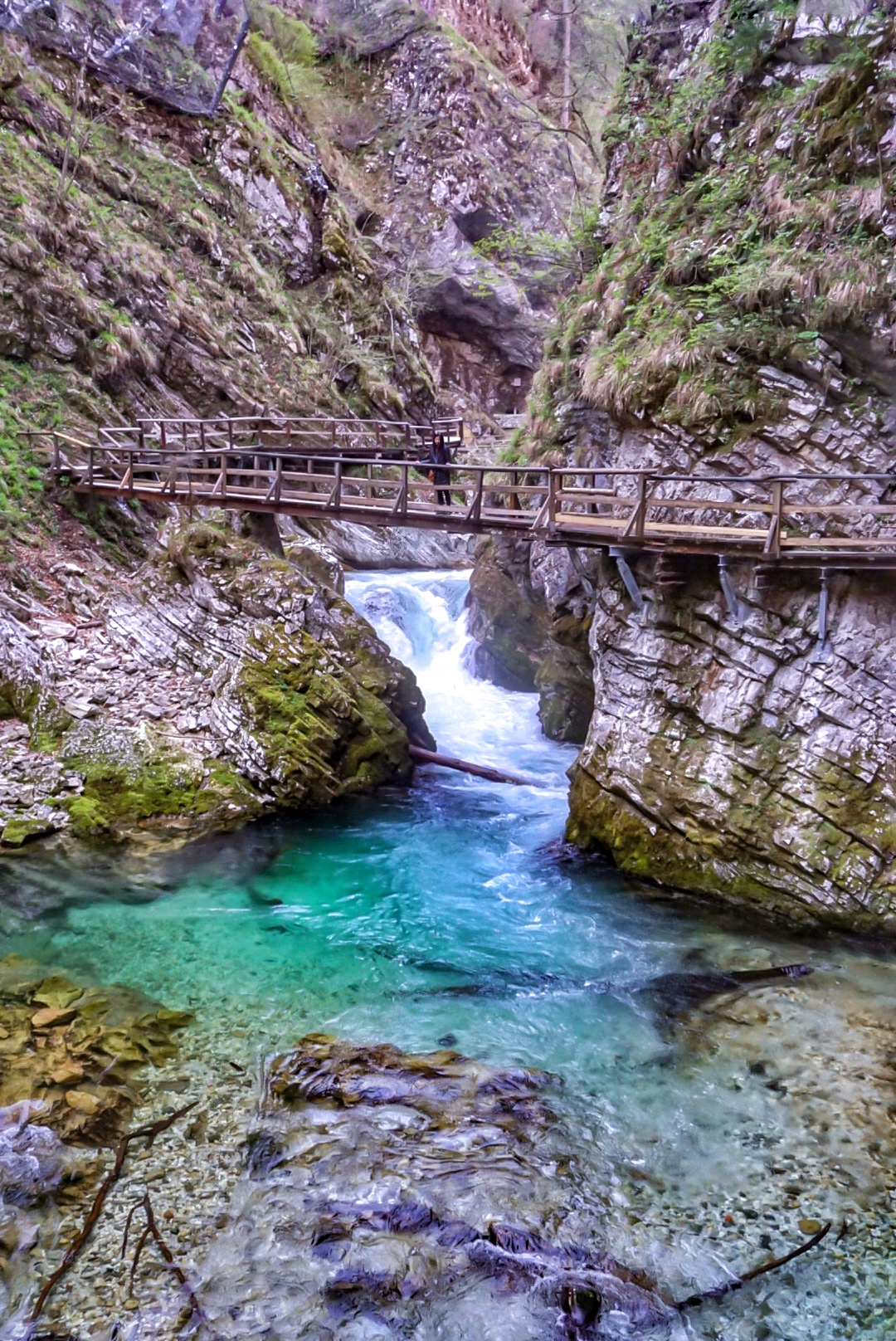
Bled Castle
After the Vintgar Gorge, we made our way to Bled Castle. This medieval castle overlooks the lake and offers some incredible views of the surrounding city and natural landscape. It’s the oldest castle in Slovenia (dating back to 1004) and one of the most visited attractions in the country. While we didn’t think the castle itself was particularly beautiful, we did enjoy the panoramic views from the upper courtyard while snacking on….another helping of Bled Cream Cake and coffee at the castle cafe.
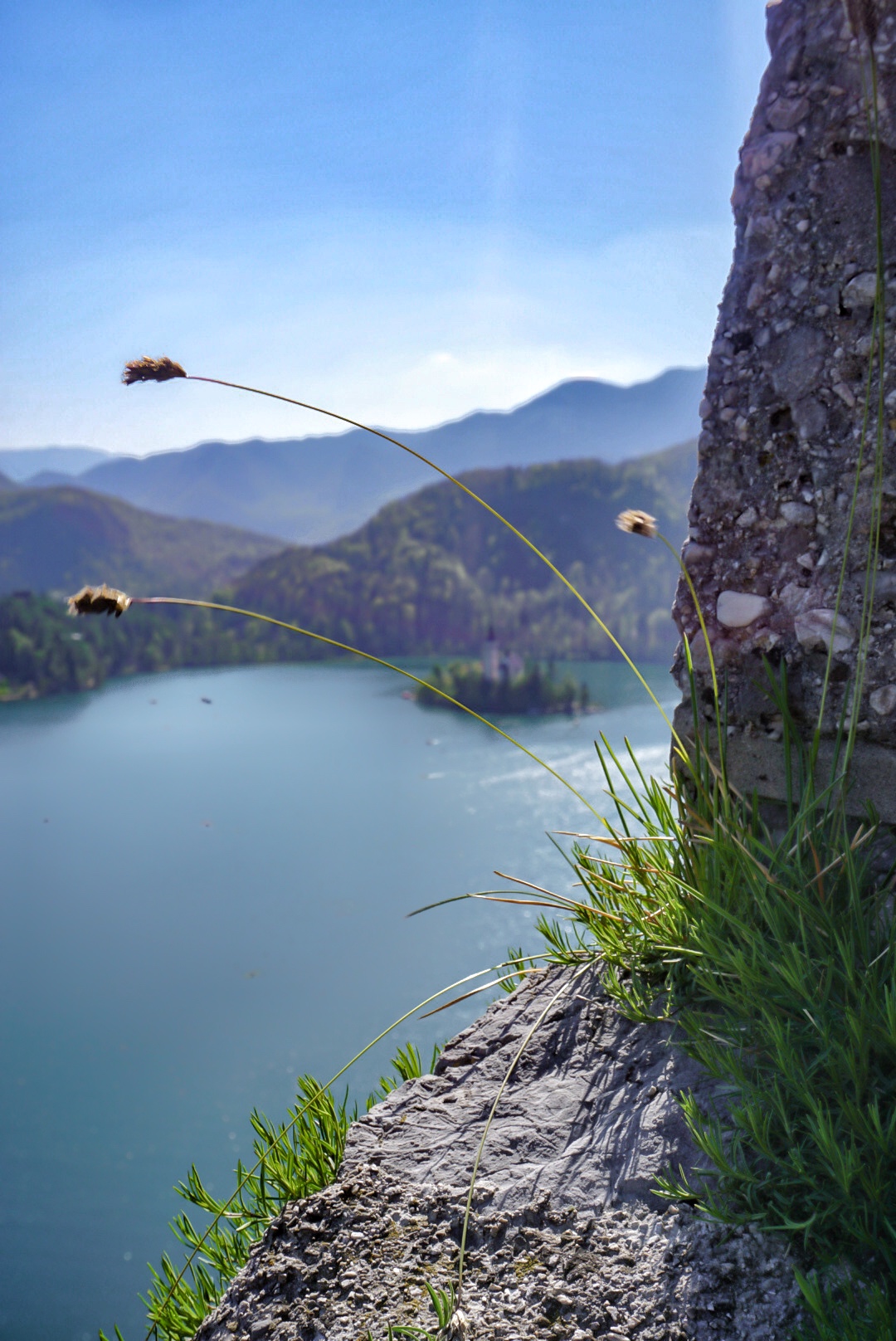
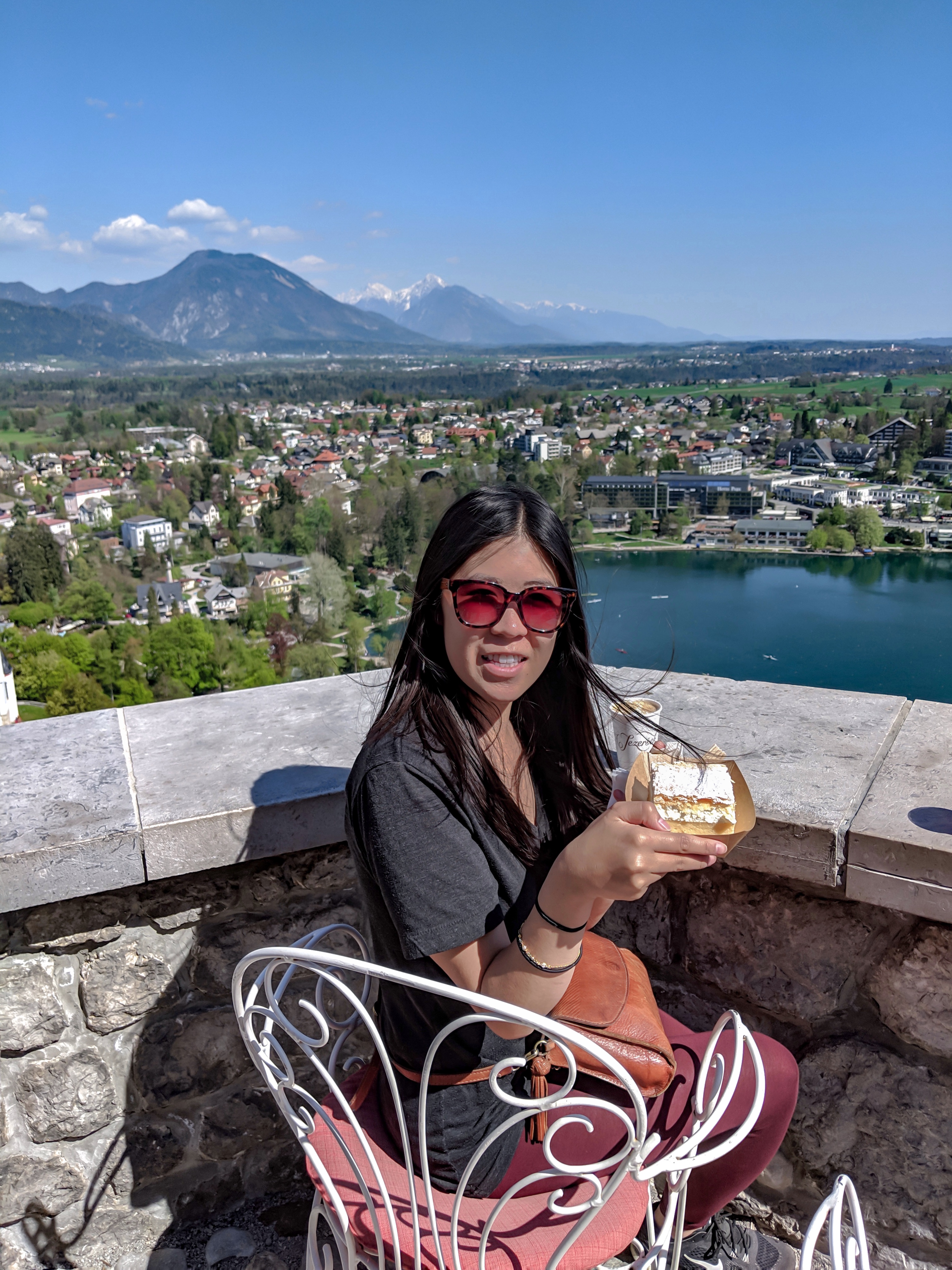
After another leisurely walk around the lake, we visited the Garden Village Lake Bled for dinner. I would highly recommend visiting this hotel/restaurant while in Lake Bled because it’s super unique! This nature resort features fun accommodation options (you can stay in a treehouse or glamping tent!), as well as an on-site restaurant which specializes in modern Slovenian cuisine. We loved the one-of-a-kind dining experience at the restaurant – the restaurant was designed around a natural stream which ran past our feet, and all of the food was served on tabletops of fresh growing grass and herbs.


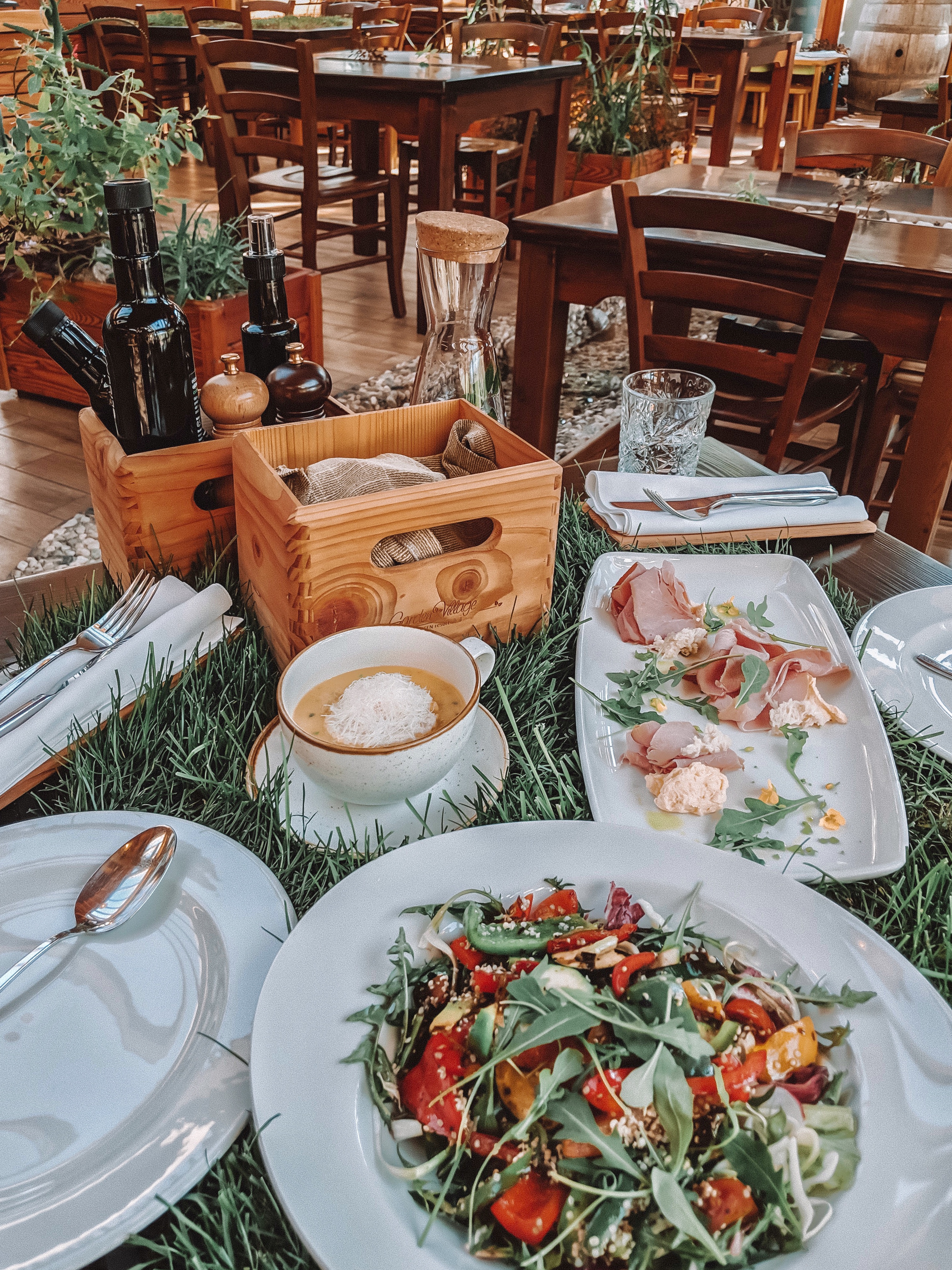
Day 4: Triglav National Park and Soca Valley
After enjoying our early morning picnic breakfast, we checked out of our Bled campsite and made our way to the main highlight of the day: Triglav National Park.
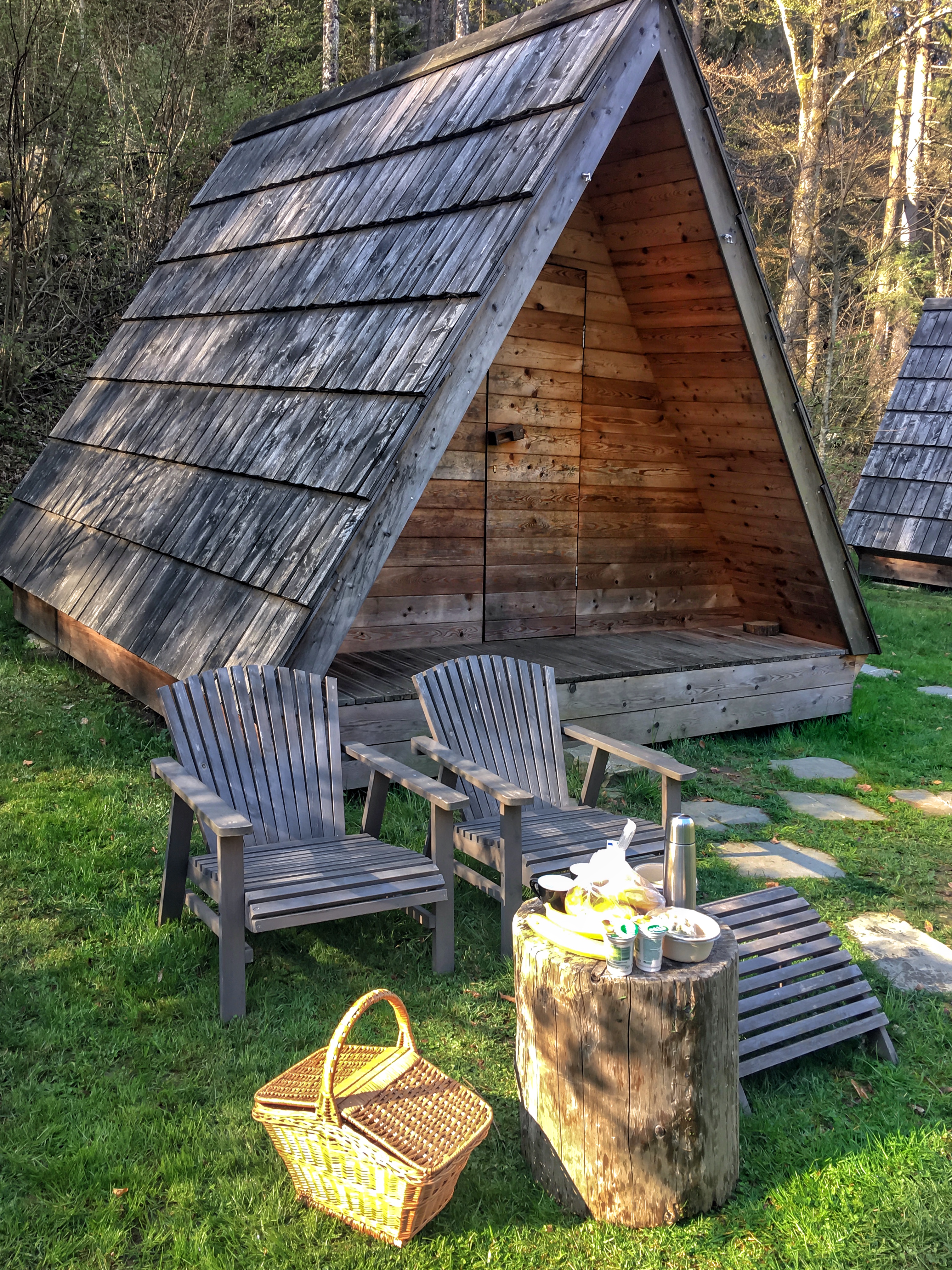
Triglav National Park
Our first stop was to the Zelenci Nature Reserve, which is a small wetland area surrounded by the Julian Alps. This wetland is covered in a series of wooden boardwalks and also features an observation tower. This natural spring water comes from the underground Nadiza Creek, and the reserve is named Zelenci (green for Slovenian) because of the otherworldly color of the waters.
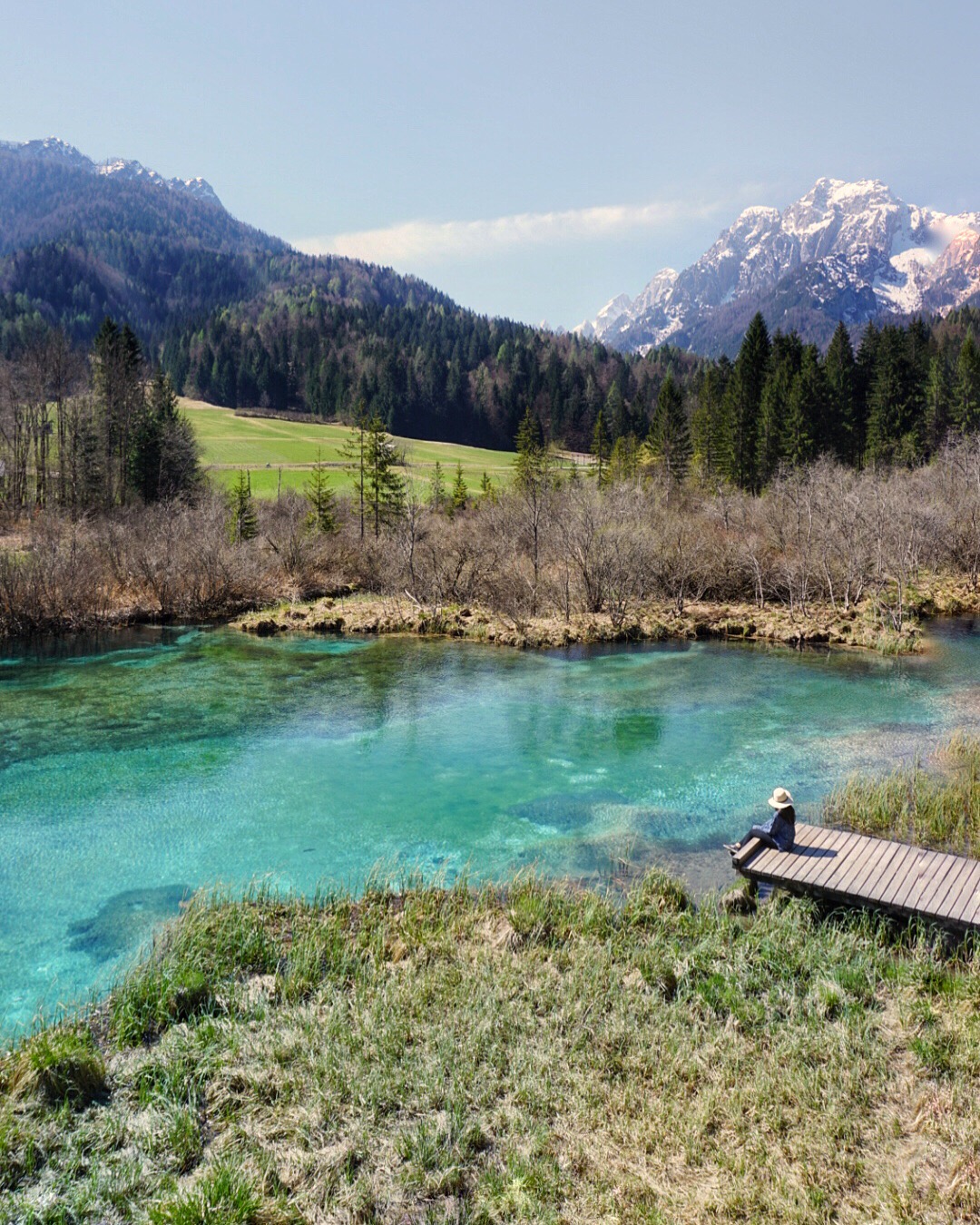
Our drive then took us through the scenic Vrisic Pass through the Triglav National Park and beautiful Soca Valley. This high mountain pass across the Julian Alps was originally built for military purposes during World War I and is now one of the most beautiful drives in the country. Triglav National Park is Slovenia’s only national park, and is a huge area featuring countless nature experiences.
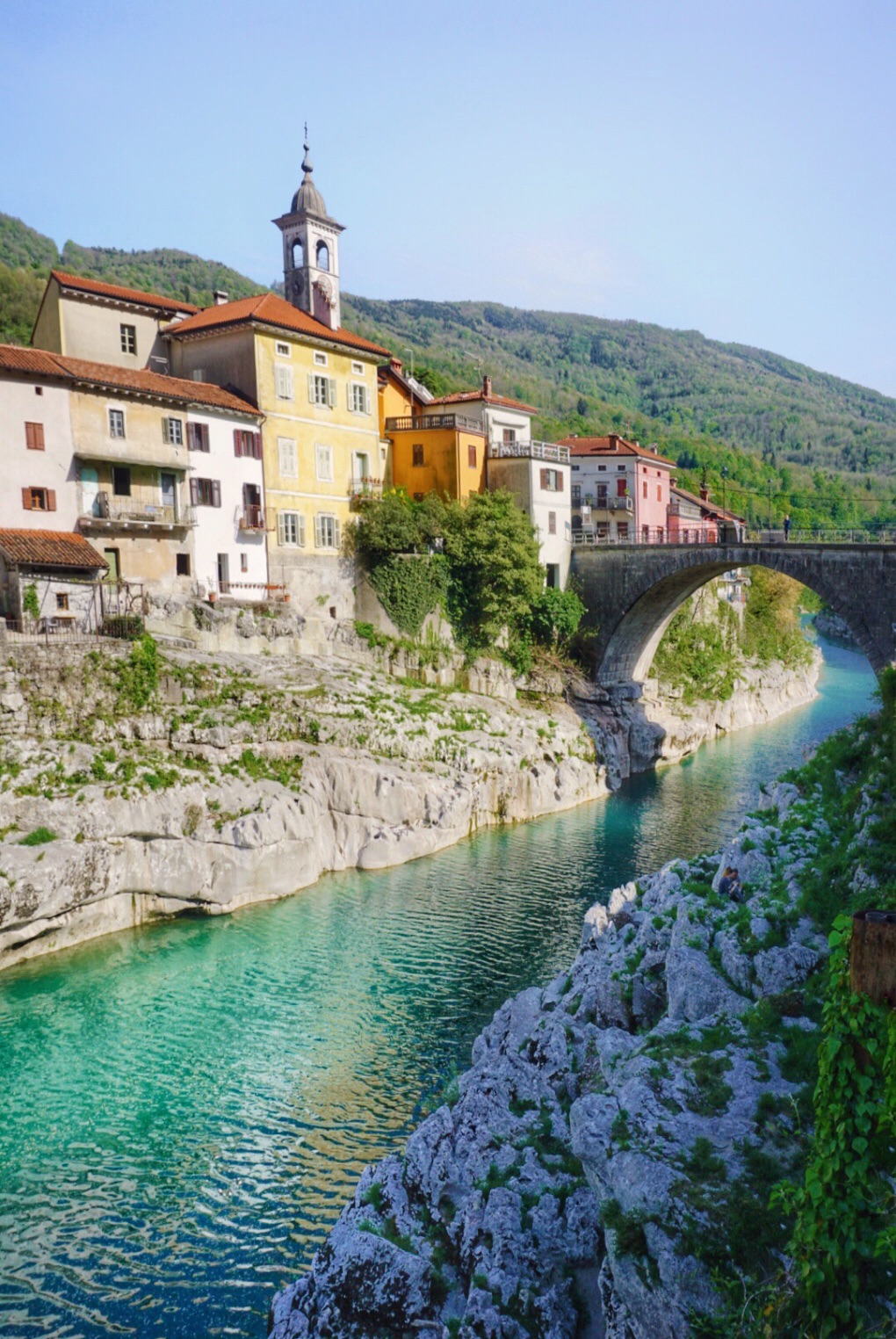
Our first stop in Triglav National Park was a visit to Lake Bohinj (the largest natural lake in Slovenia) and the nearby Savica Waterfalls. This unique A-shaped waterfall splits into two streams, and visiting the waterfall requires a short 20-minute hike (500 steps). Although the Savica Waterfall is the most visited waterfall in Slovenia, I personally thought it was overrated and super crowded. Still, it was nice to get out and stretch our legs.
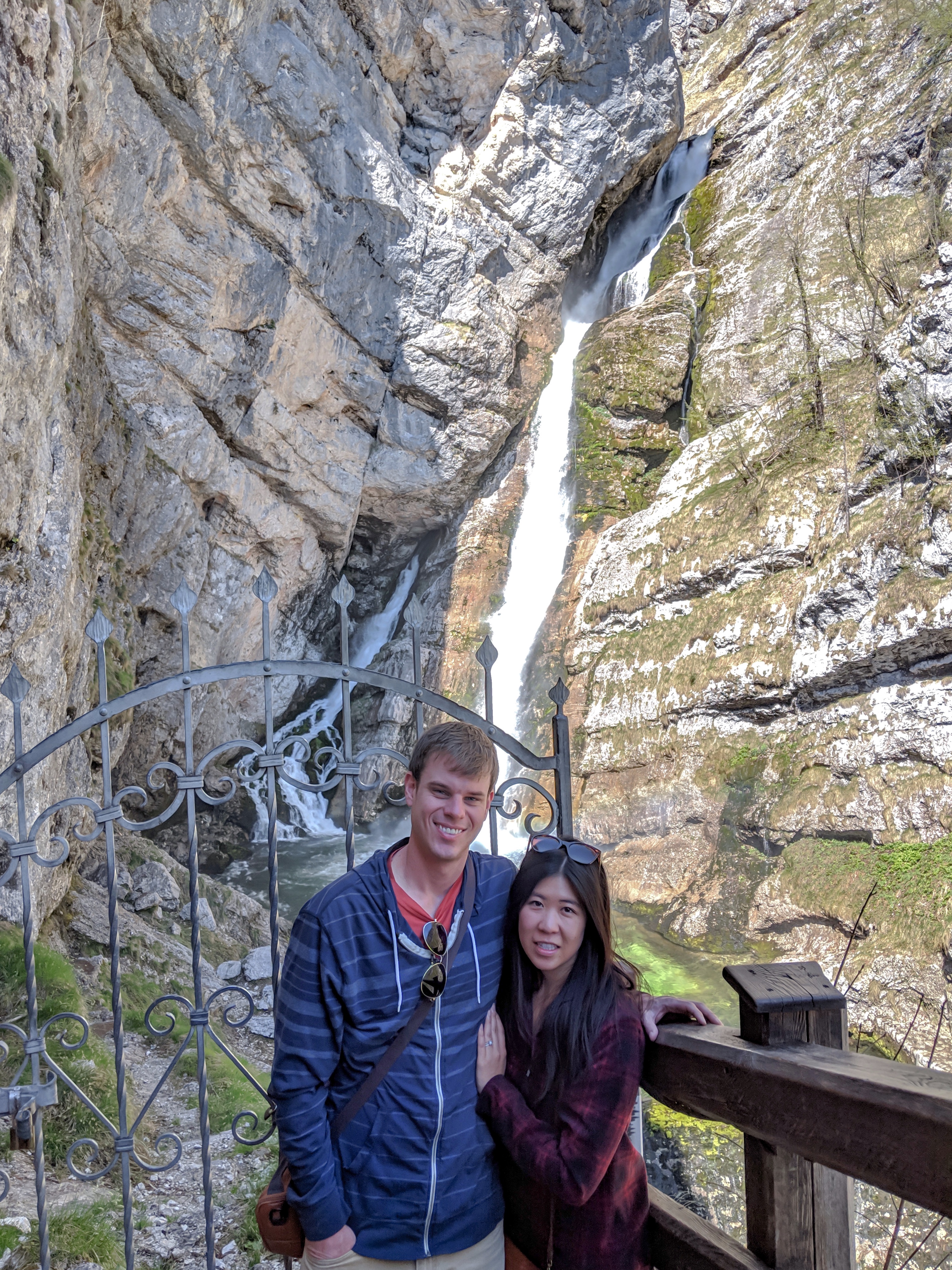
Related Post: Chasing Waterfalls in Plitvice Lakes, Croatia
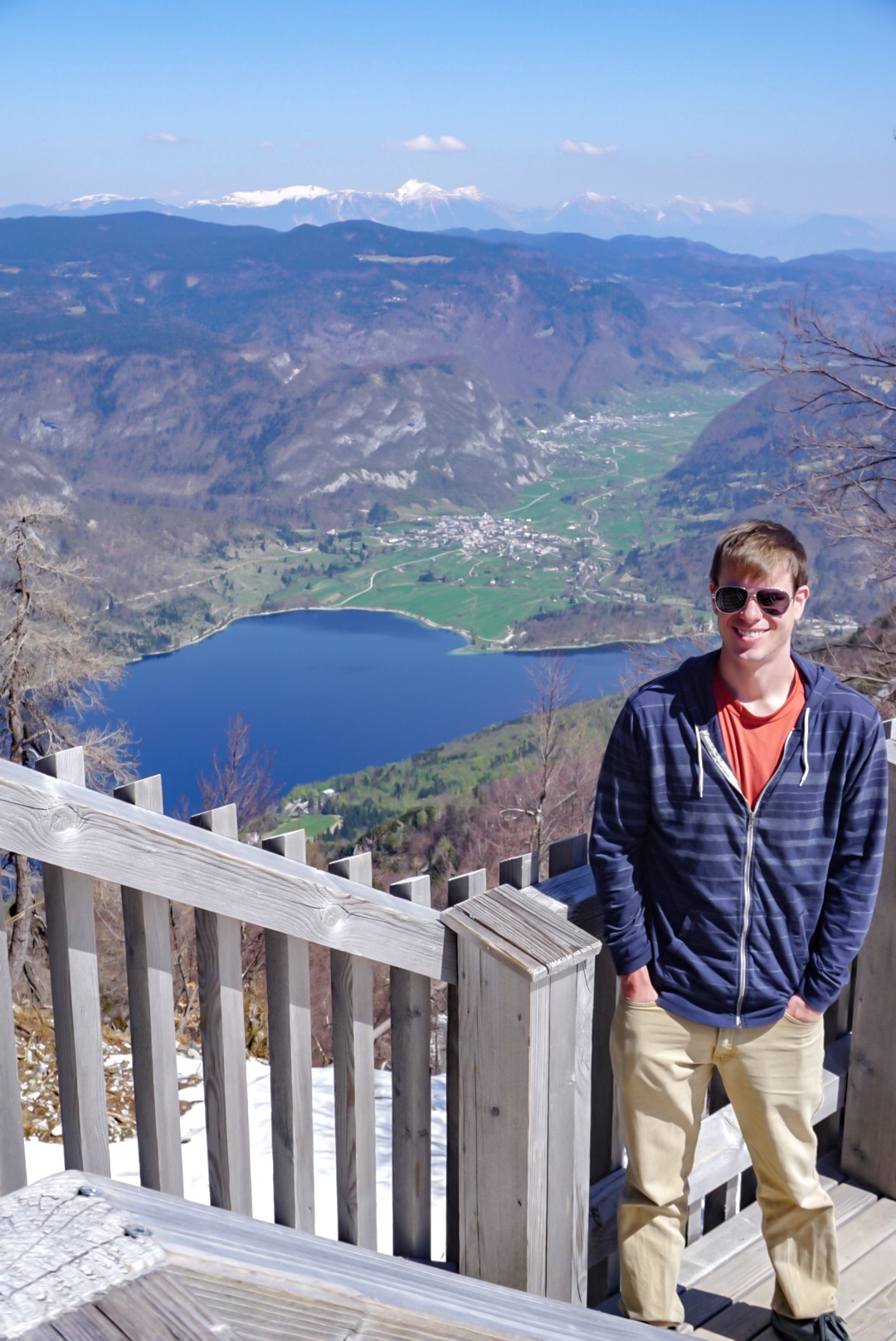
While at Lake Bohinj, we also took the Vogel Cable Car up to the Vogel Ski Center to enjoy a quick coffee/snack break at the top of the mountain.
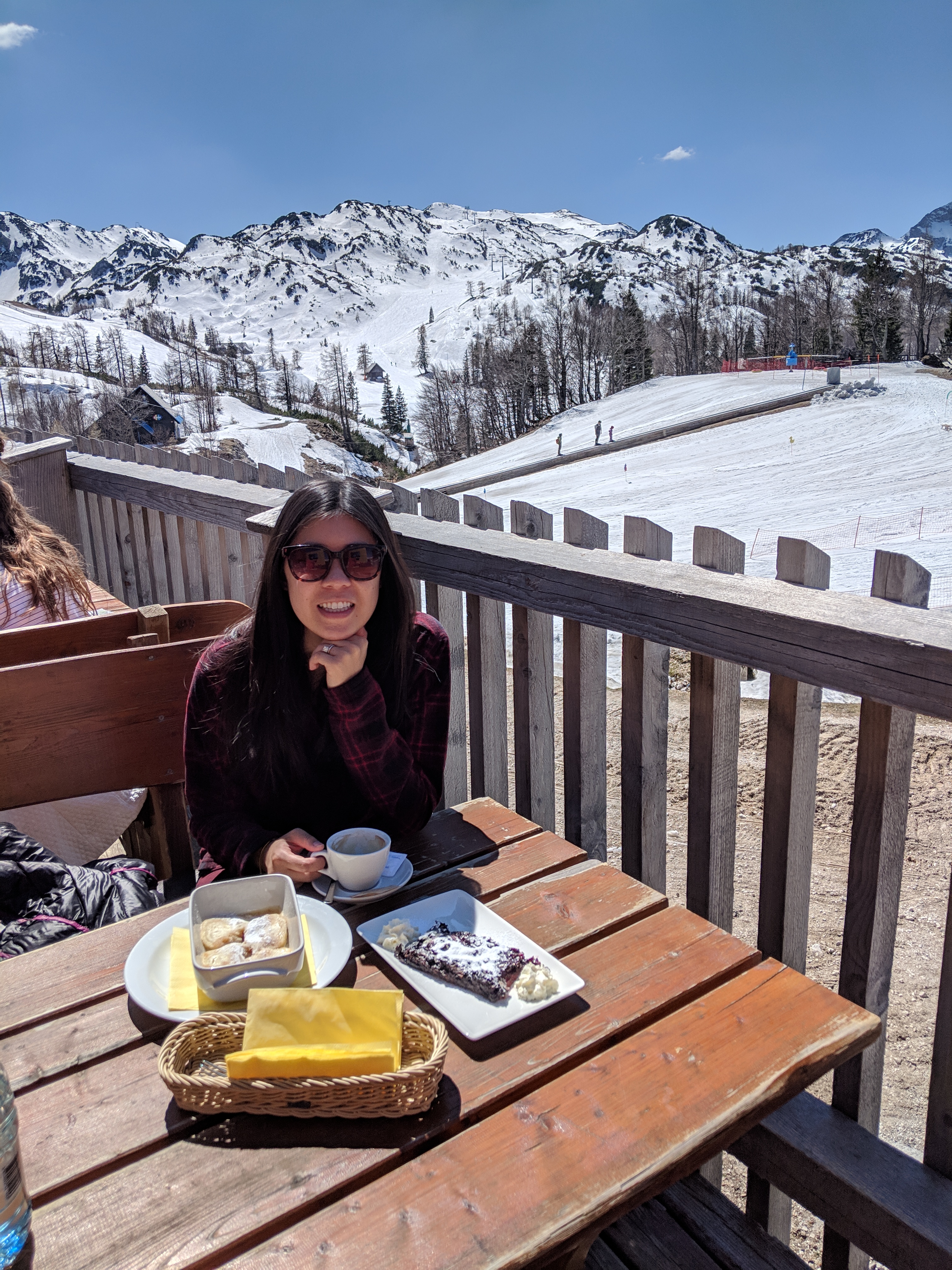

We then made a pitstop at Tolmin Gorge (a.k.a. Devil’s Bridge) which is a vast bridge that passes over a giant gorge.
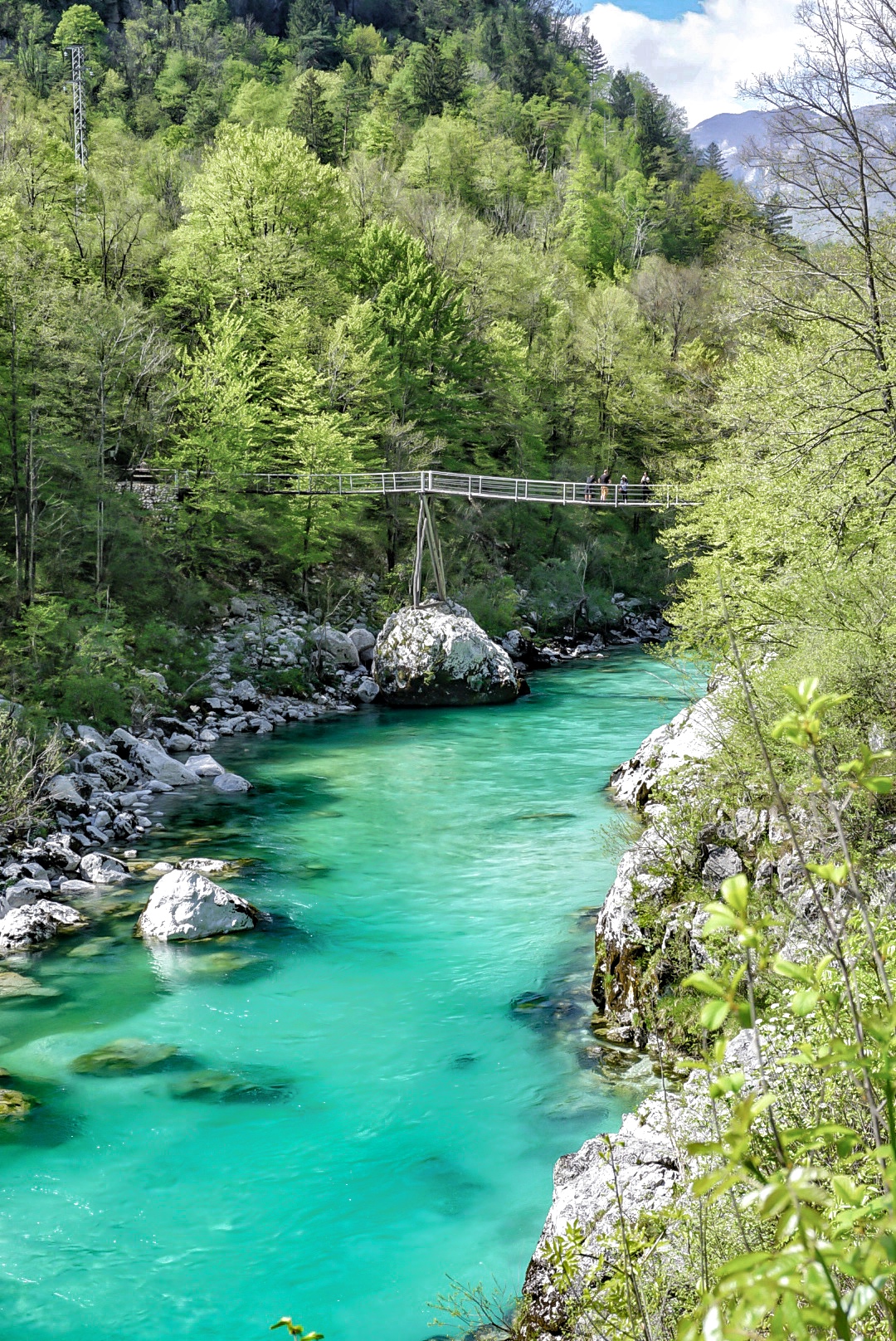
Our last stop in Triglav National Park was the hike to Kozjak Waterfall, which is a 45-minute easy/moderate hike from the town of Kobarid. This waterfall was absolutely beautiful – tucked away in a moss-covered cave and featuring bright green waters.
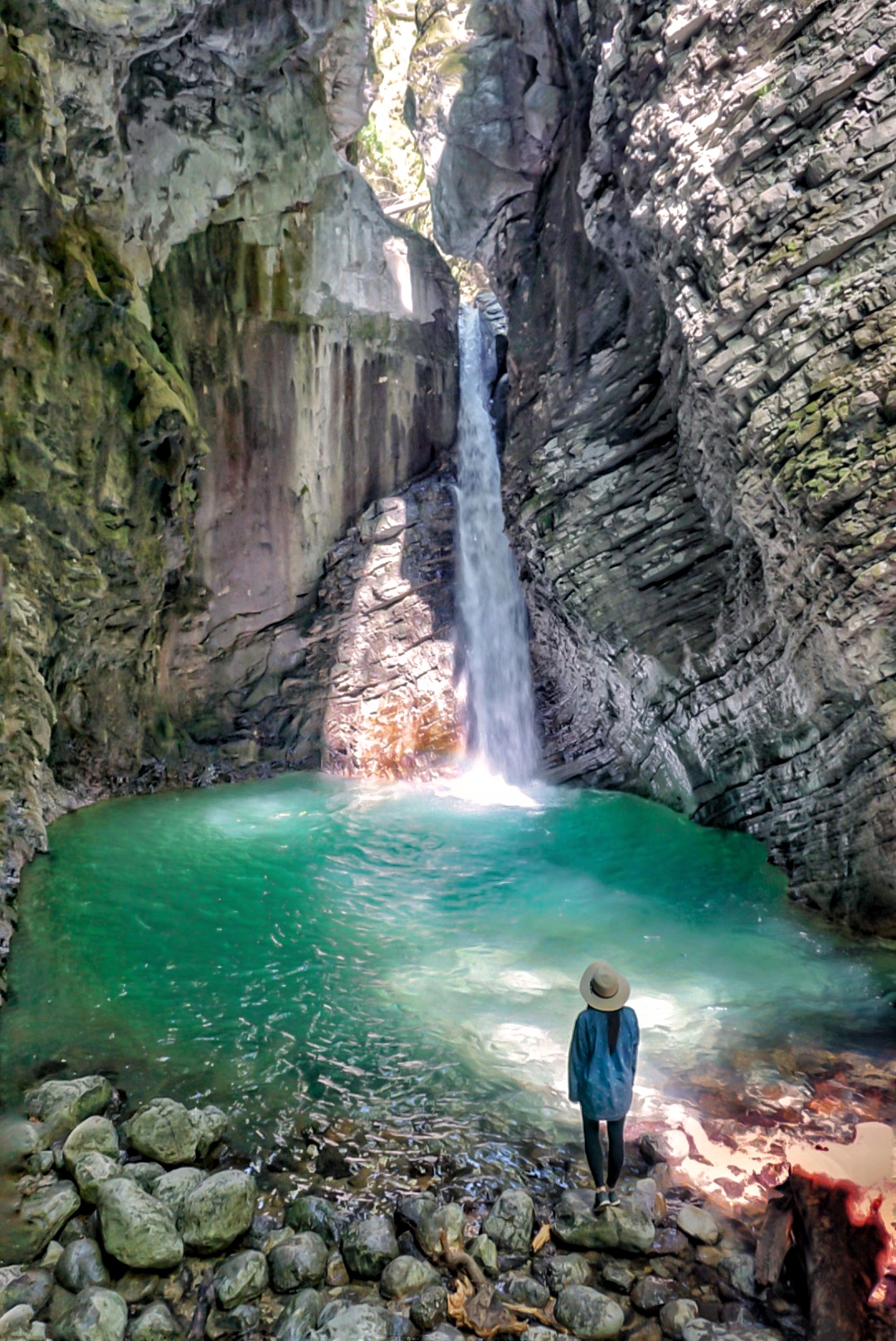
After a long day of exploring, we then made a long 2-hour drive to our final stop in Slovenia, the city of Piran.
Day 5: Piran
Piran really surprised us – with a bustling harbor, tons of fantastic seafood restaurants, and beautiful seaside walks, this colorful coastal village is definitely worth visiting while on a road trip through Slovenia. Piran is also a very unique city – it was previously considered part of the Republic of Venice, then was part of Yugoslavia. Up until the mid-20th century, Italian was actually the main language spoken in Piran!
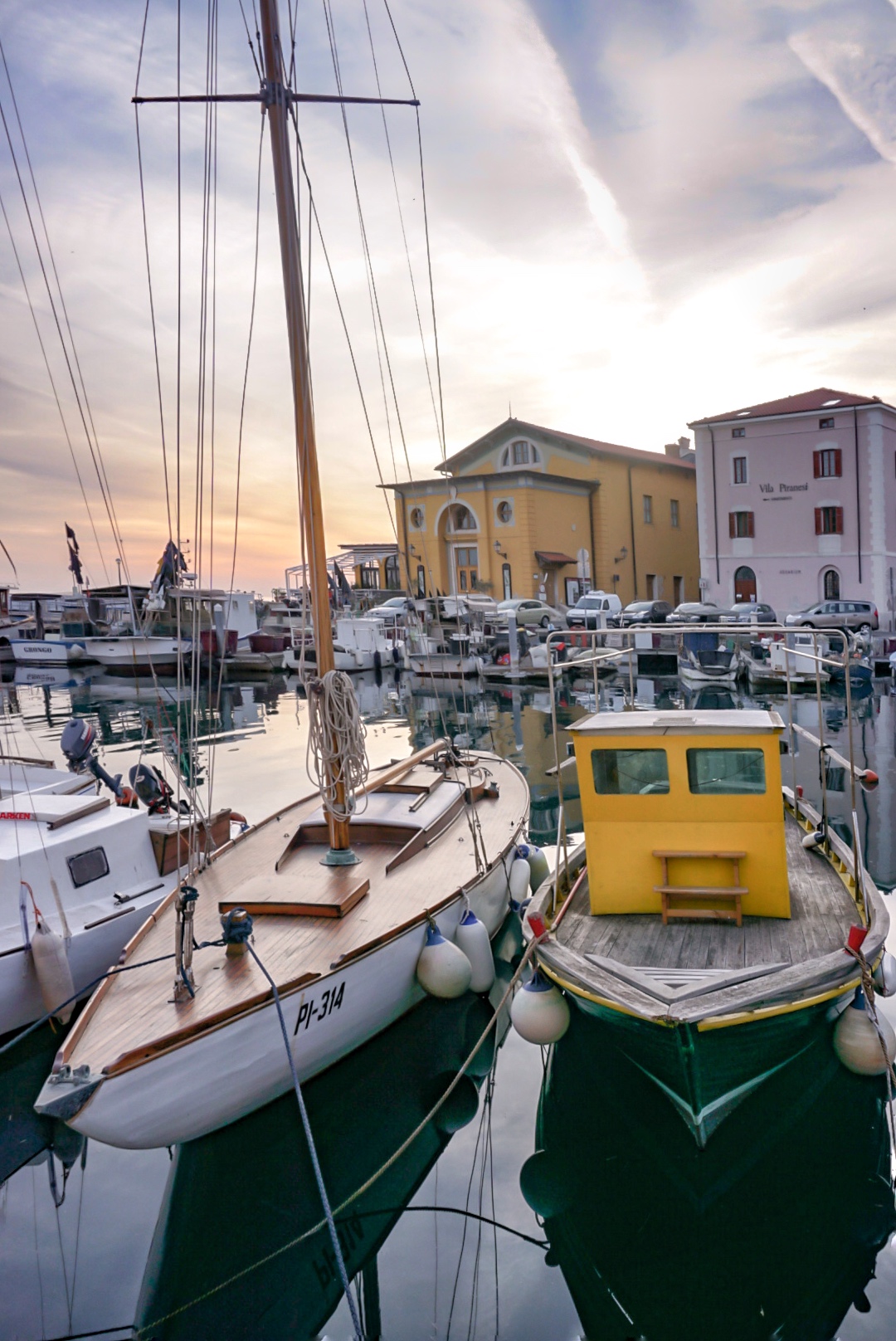
Church of St. George
One of my favorite things we did while visiting Piran was hike to the top of the Church of St. George to see the bell towers, and views overlooking the Piran Old Town as well as the nearby Italian coast. Note – hiking to the bell towers requires taking 146 narrow, creaky steps up (in other words, not for those who are either claustrophobic or scared of heights)!
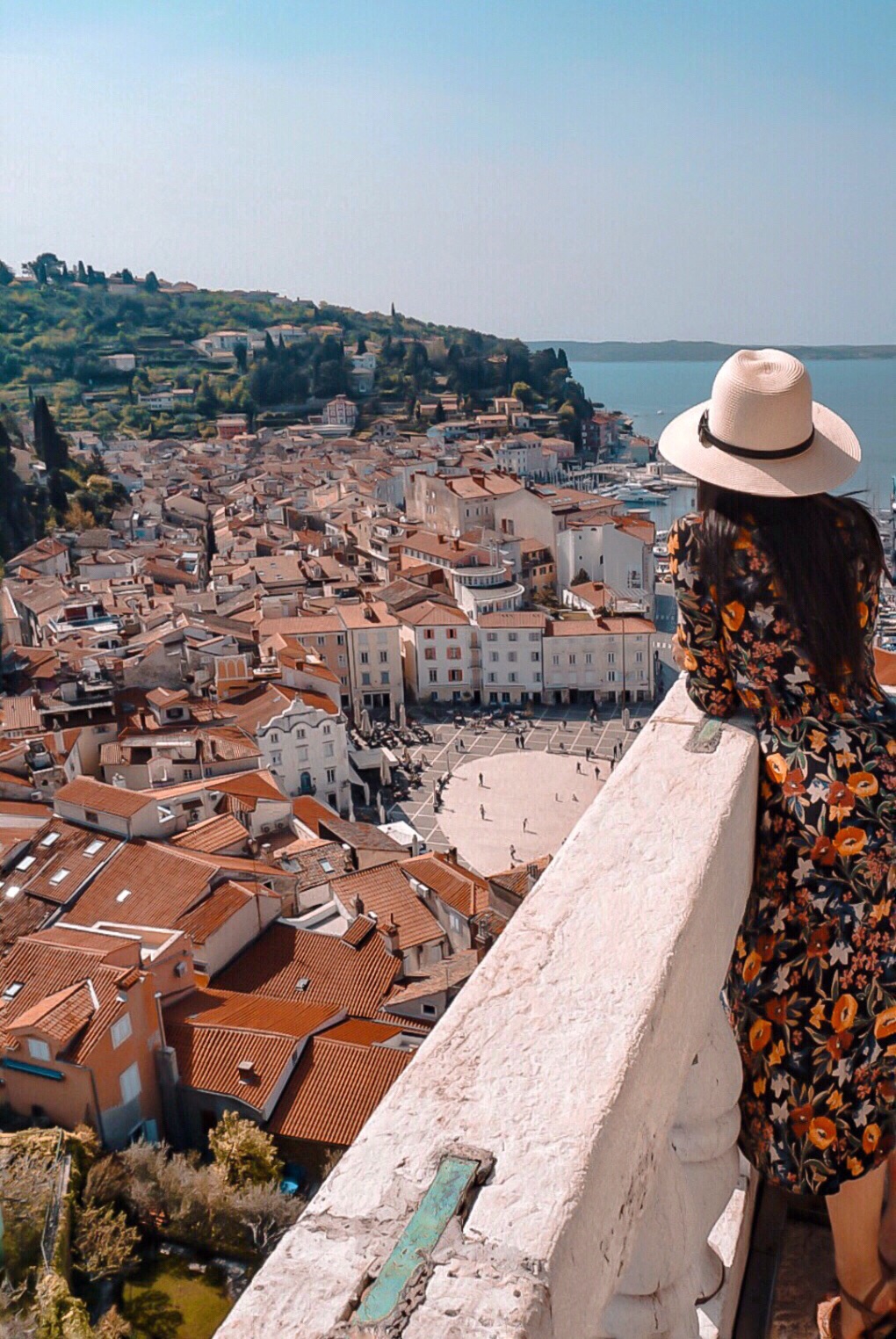

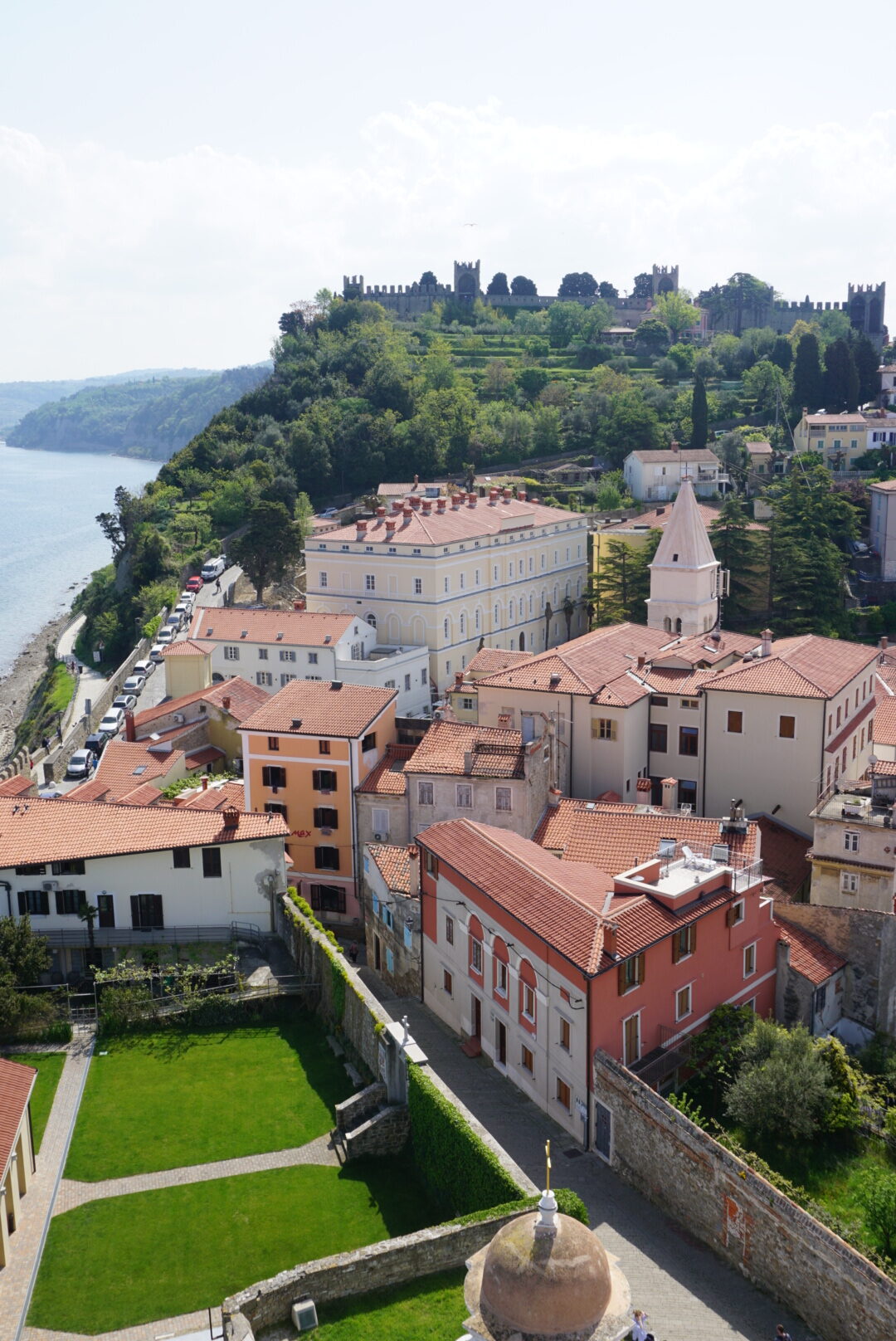
Piran Old Town
We spent the better part of the day roaming the Old Town of Piran, enjoying the bustling colorful Tartini Square and local shops.
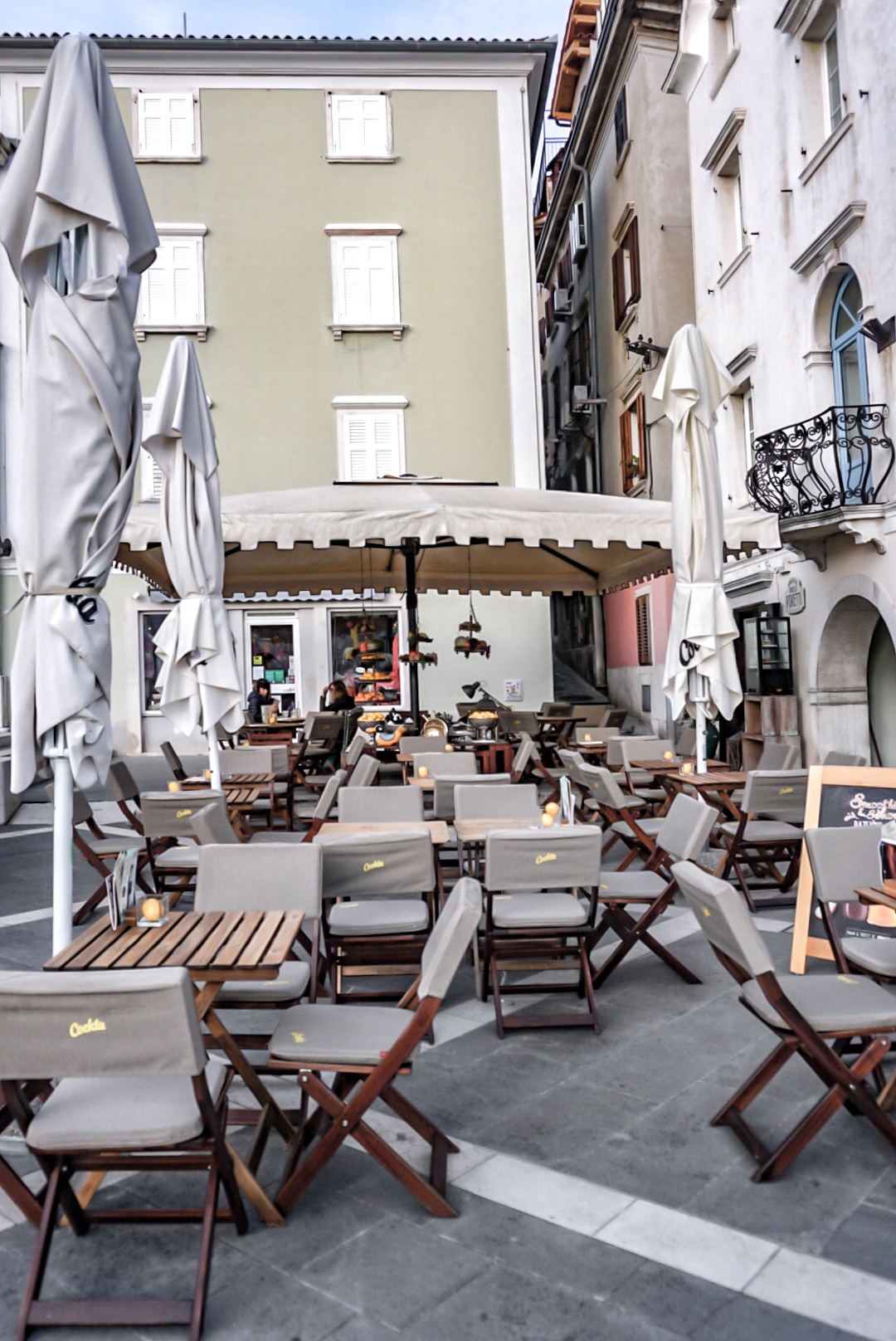
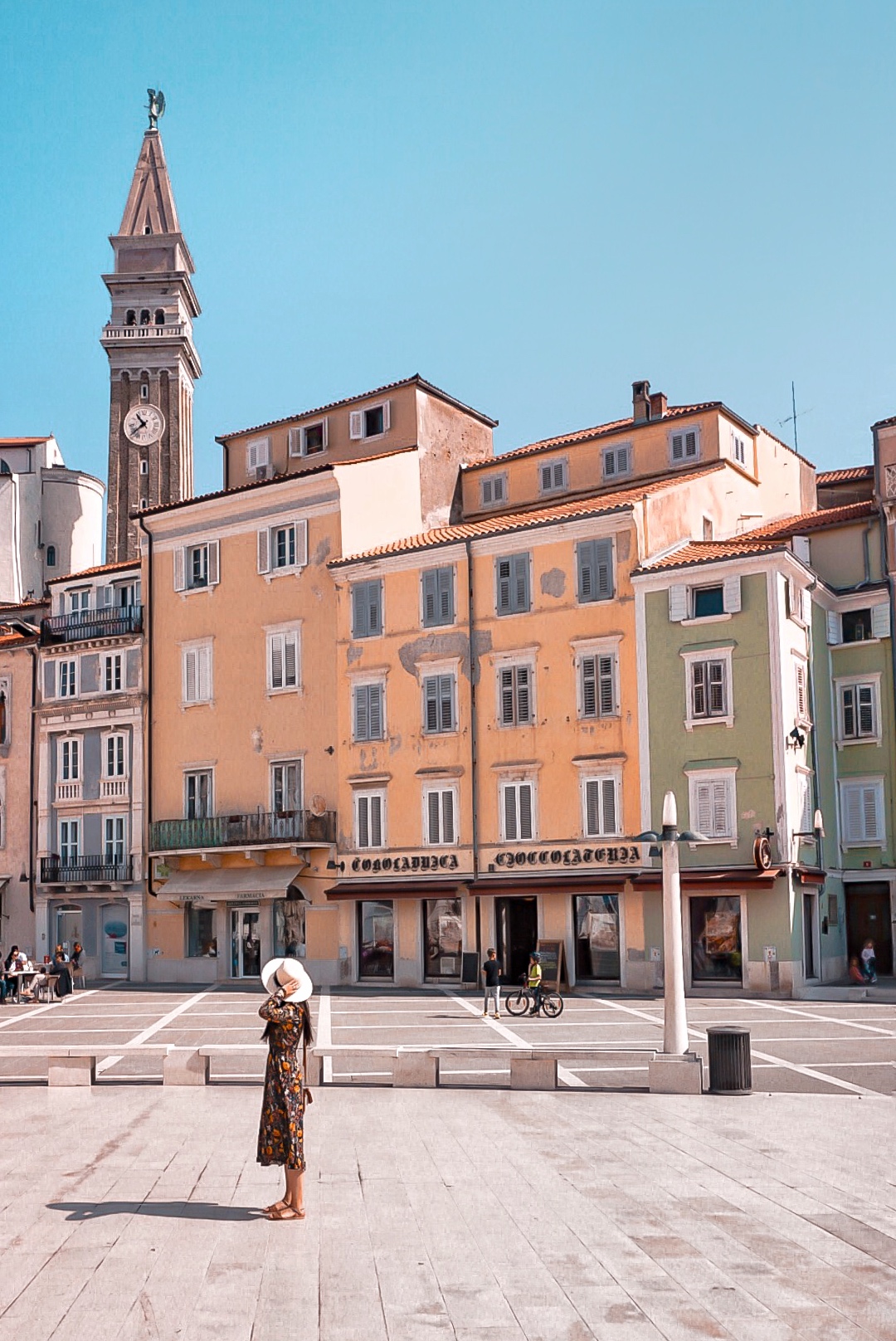
We also spent some time walking the medieval walls of Piran. The walls of Piran were originally built in the late 15th century to protect the city from Turkish invaders. While most of the walls are not accessible, there are still several short stretches where you can enjoy some great views.
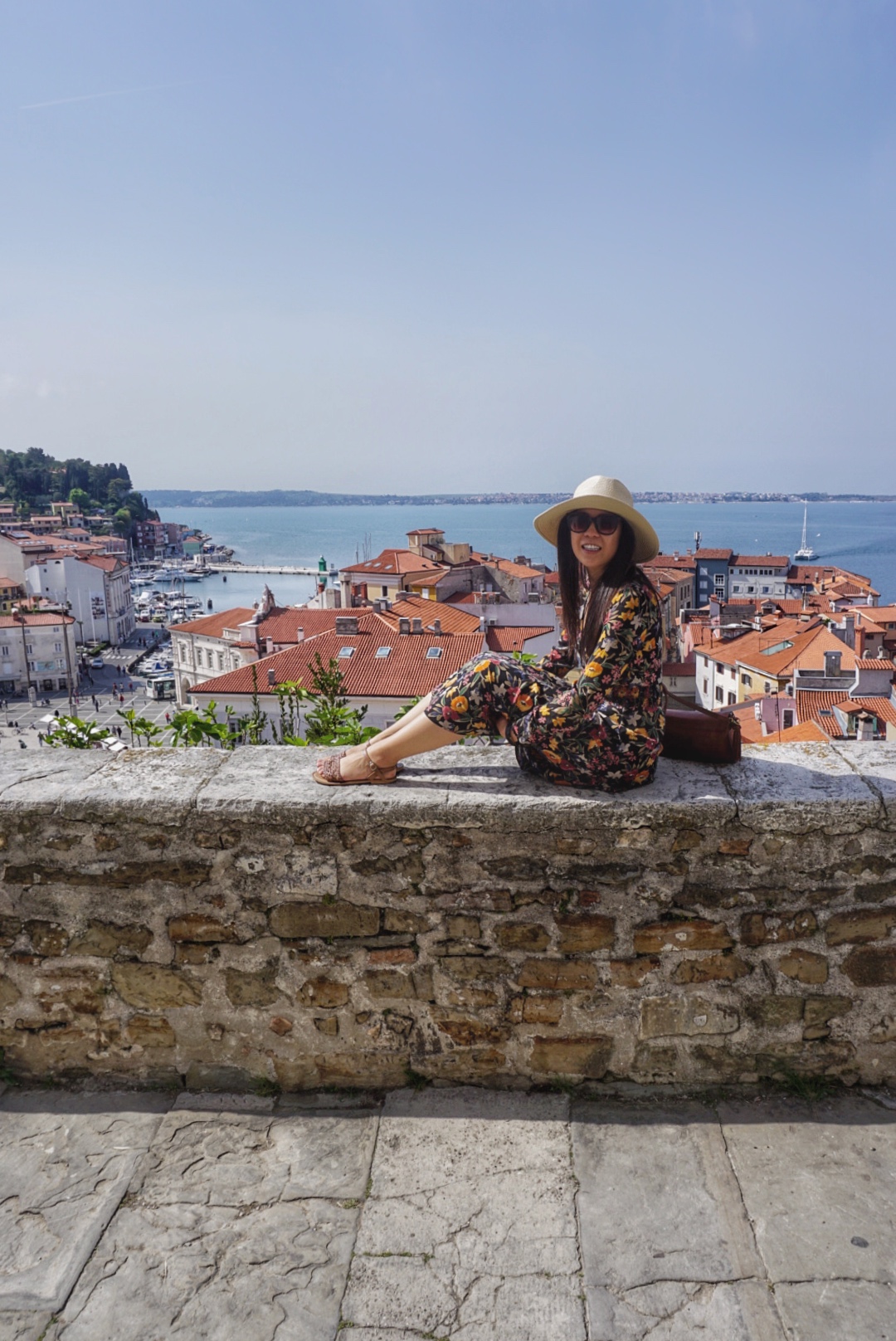
Finally, we ended our day with an extravagant dinner of fresh caught lobster and pasta (a great restaurant option is Firtolini Pri Cantini). It was the perfect way to celebrate the closing of another epic road trip!
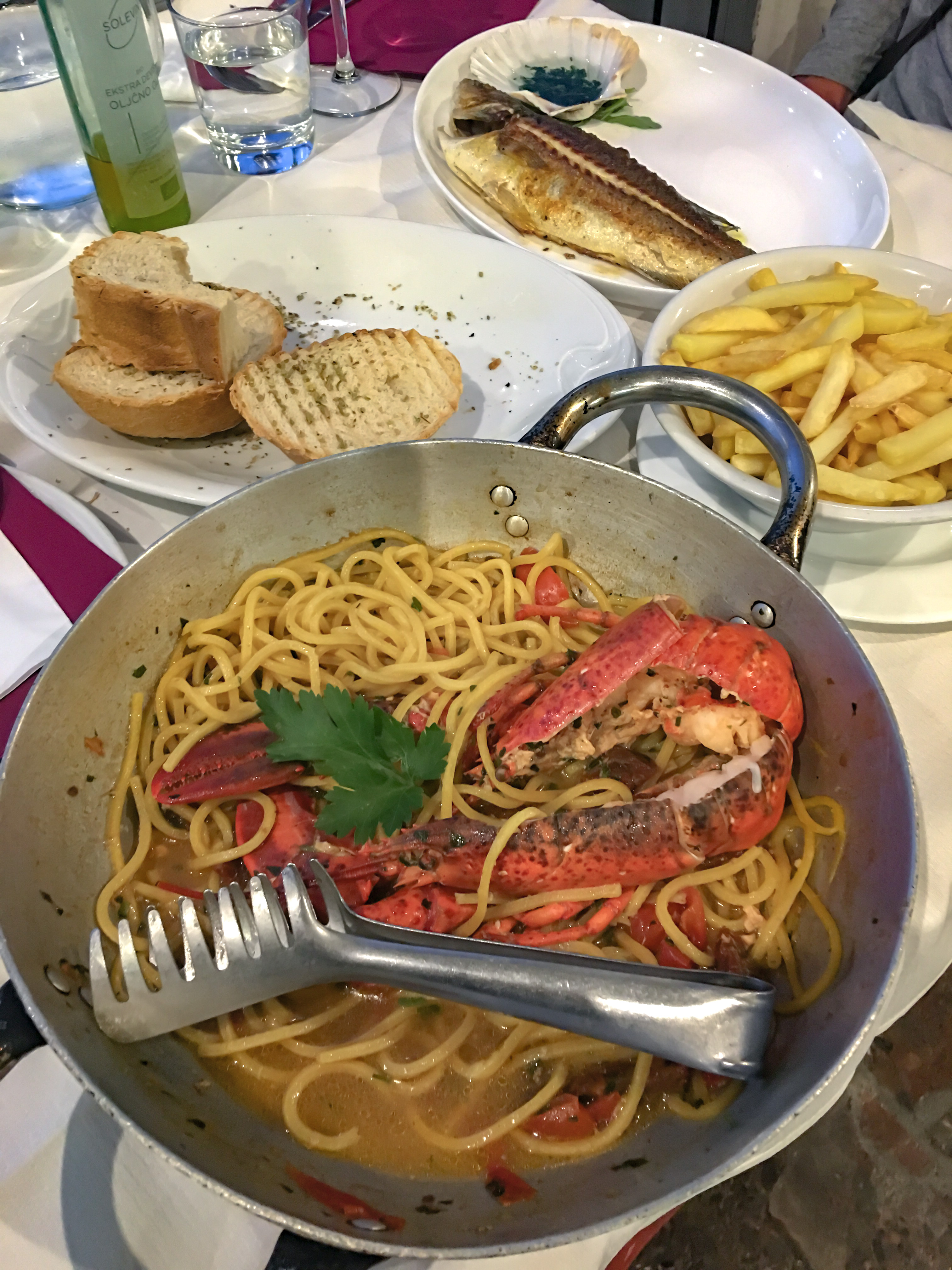
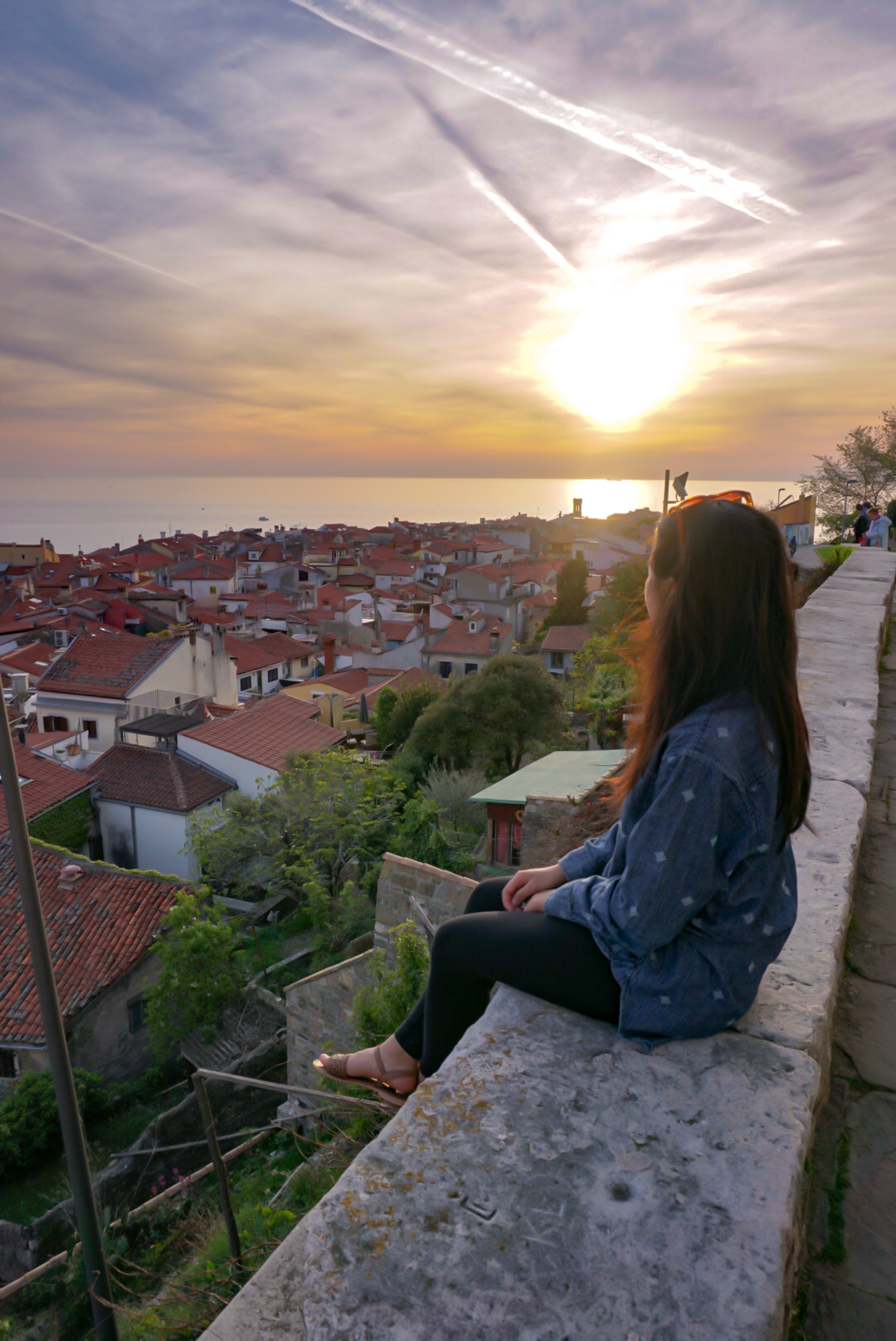
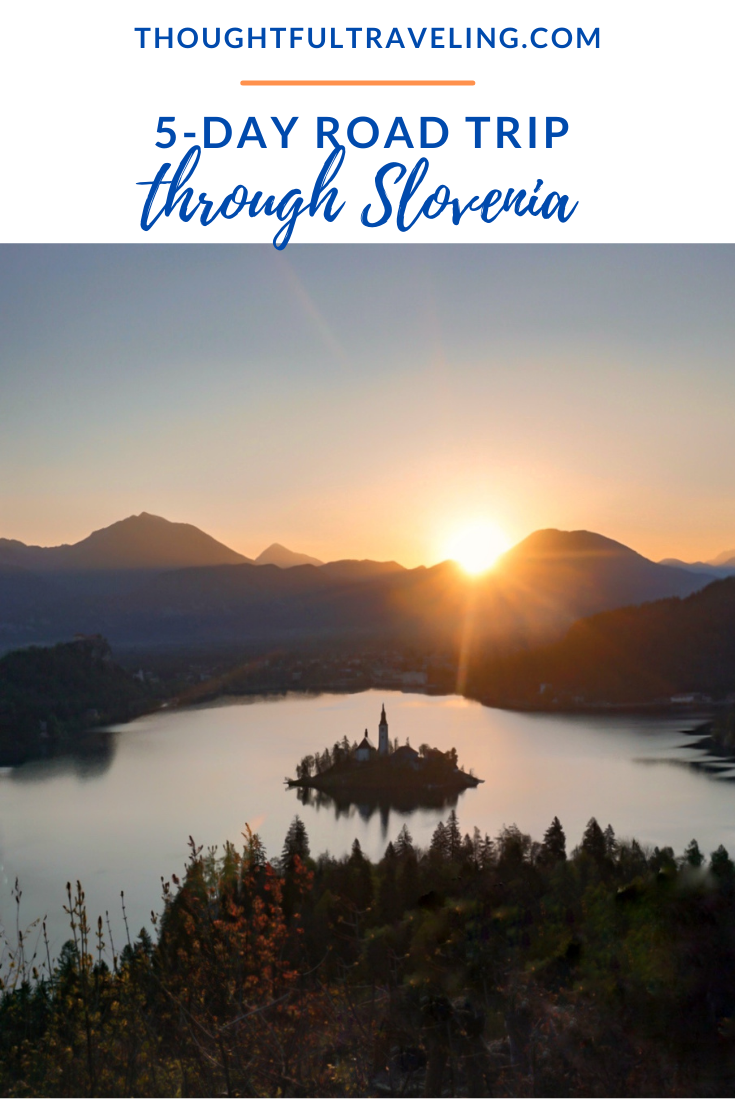
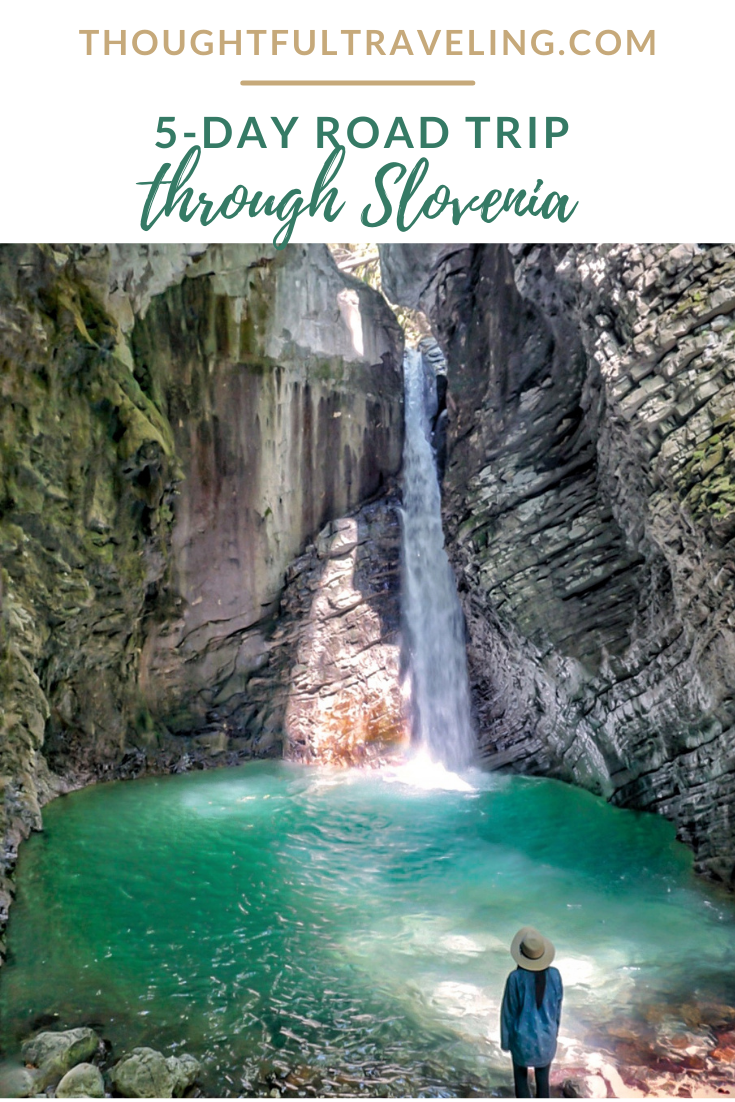
You might also like: Our 2-Week Norway Road Trip Itinerary
You might also like: A Road Trip Through the Scottish Highlands
You might also like: Chasing Waterfalls in Plitvice Lakes, Croatia

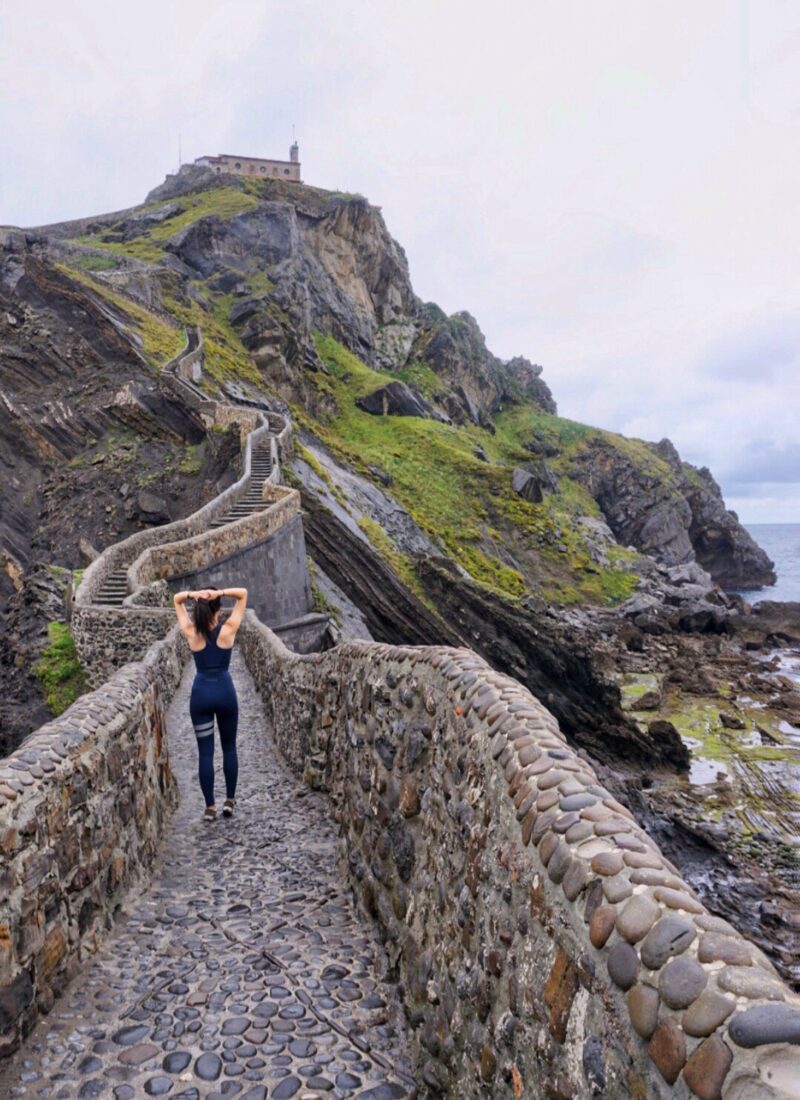
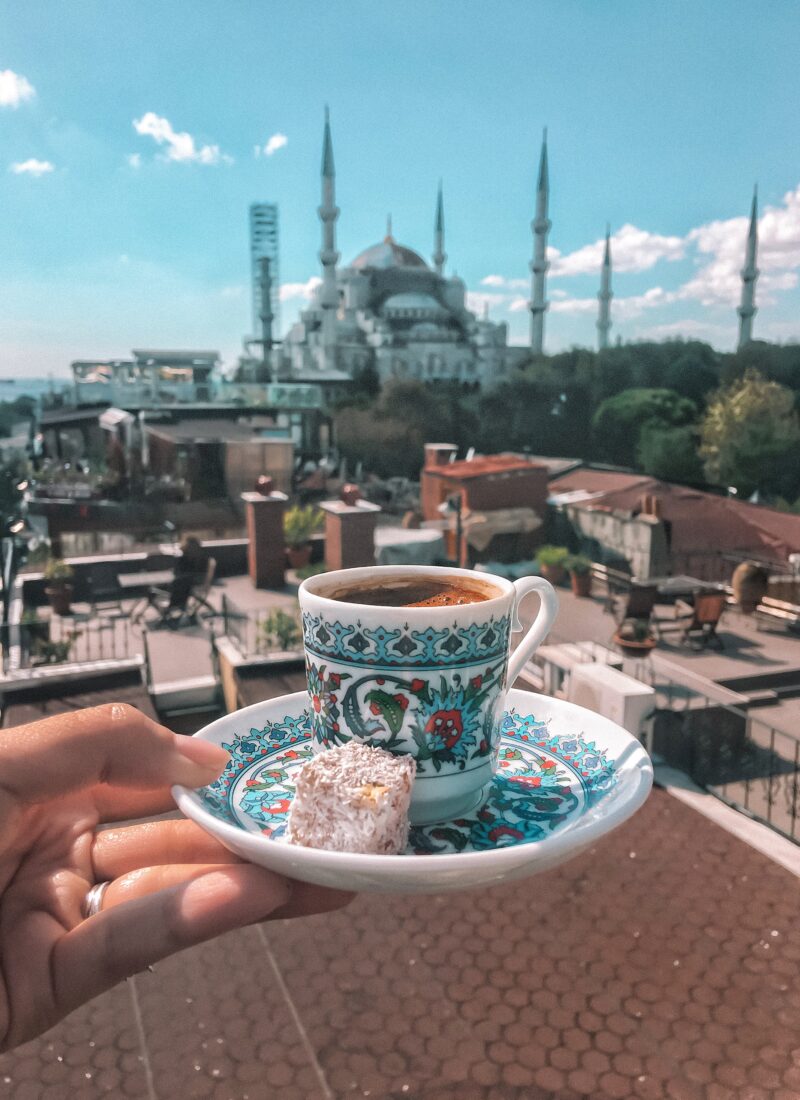
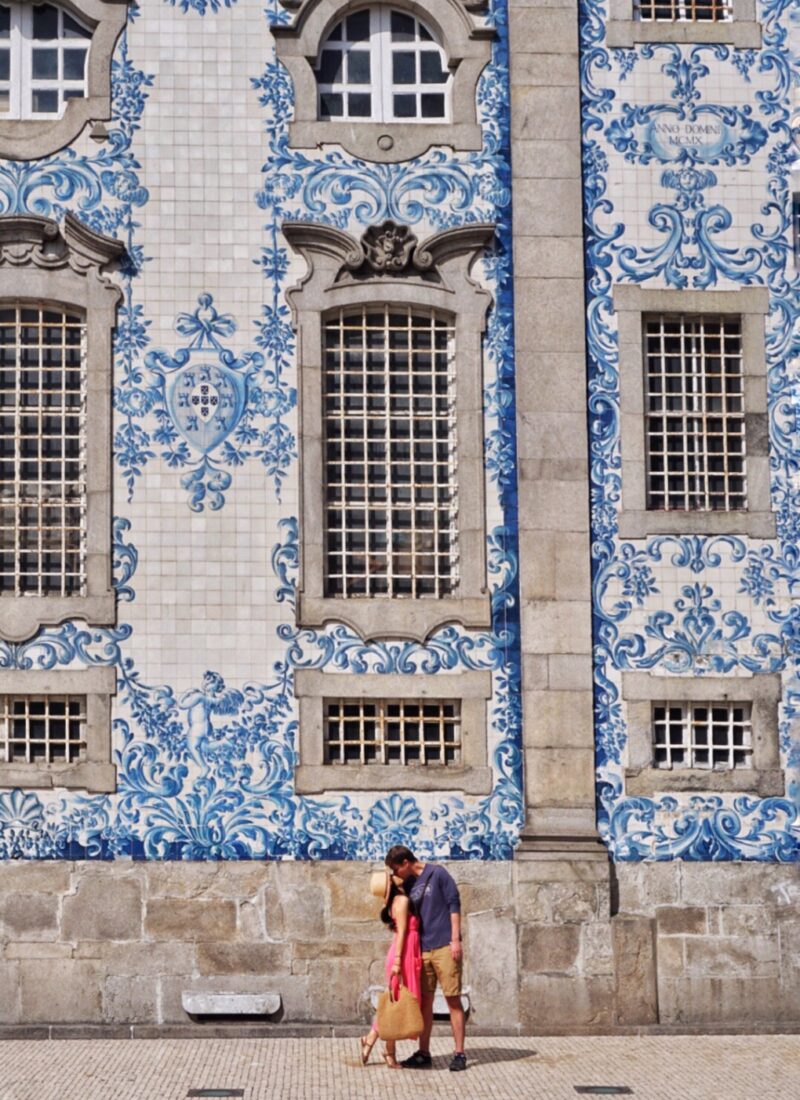
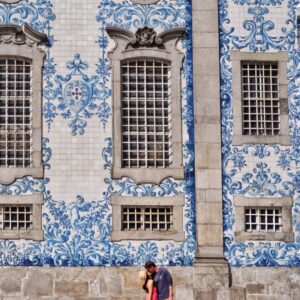

Leave a Reply